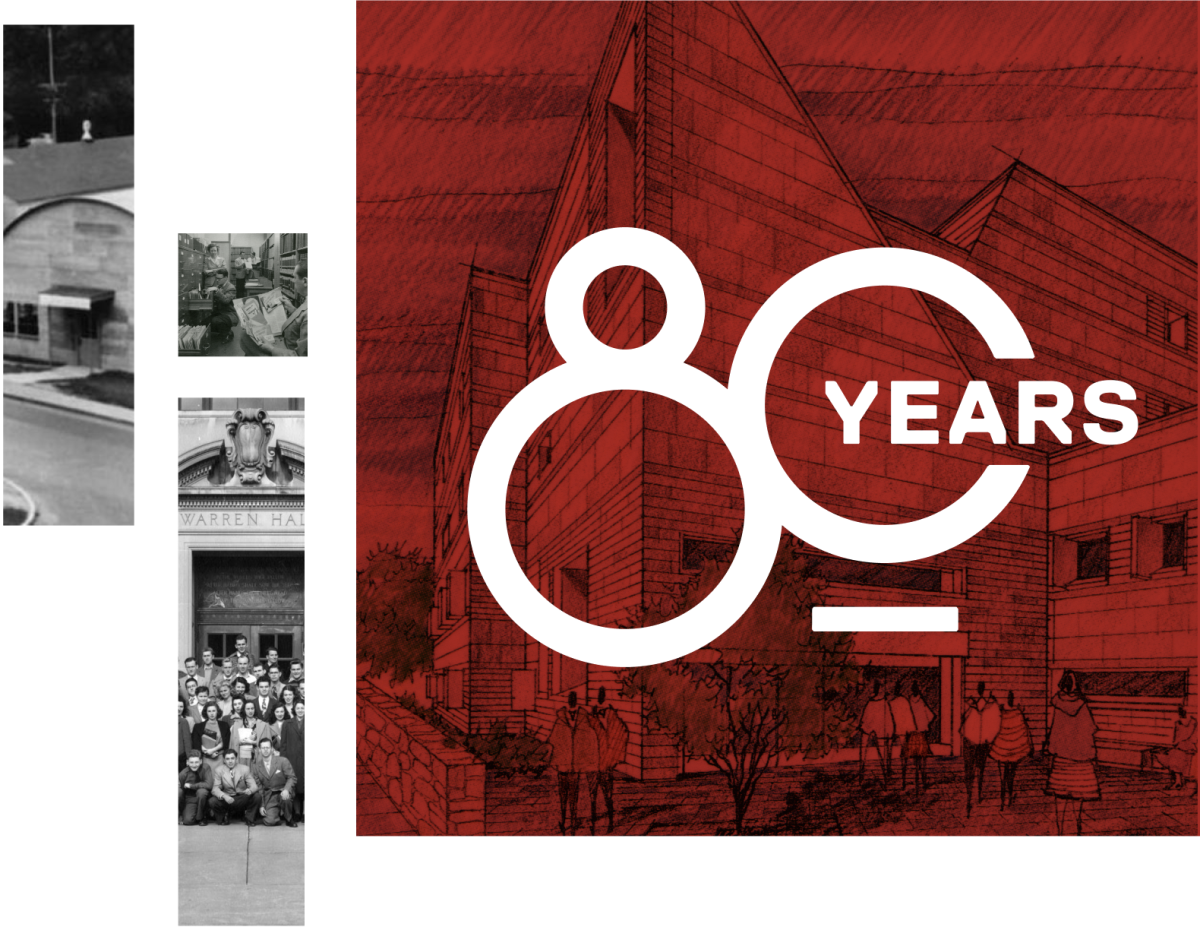1940s
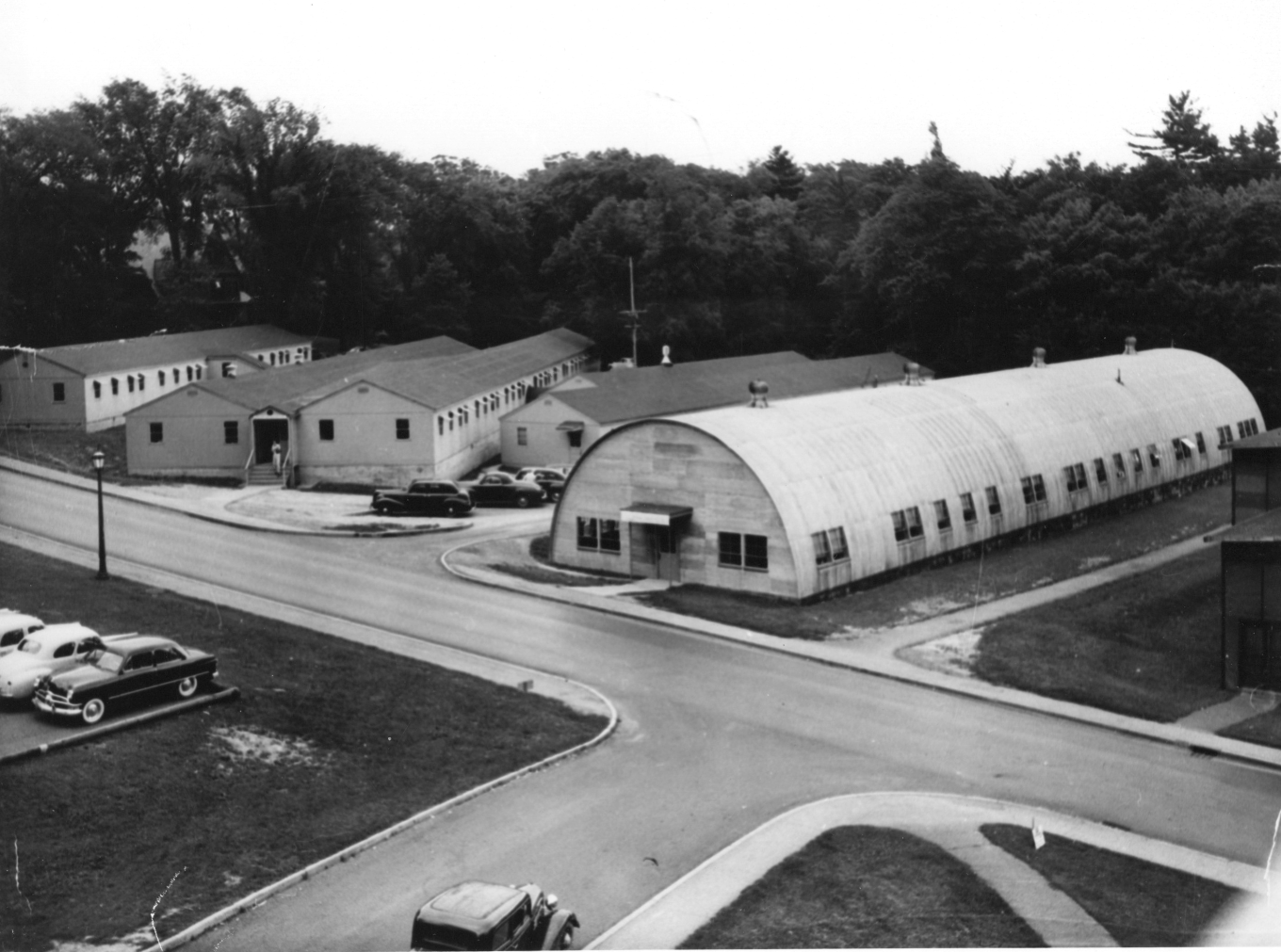
Syracuse University and Union College compete with Cornell for the institution’s location. Some Cornell trustees, fearful of pushback from anti-labor constituencies, and some professors, who were territorial about their subject areas, are skeptical about bringing the school to Ithaca, but legislators pass a law in 1944 establishing the New York State School of Industrial and Labor Relations on the Cornell campus.
The school opens in November 1945, later than usual due to Cornell’s rush to build new housing to handle a surge in veterans taking advantage of the GI Bill.
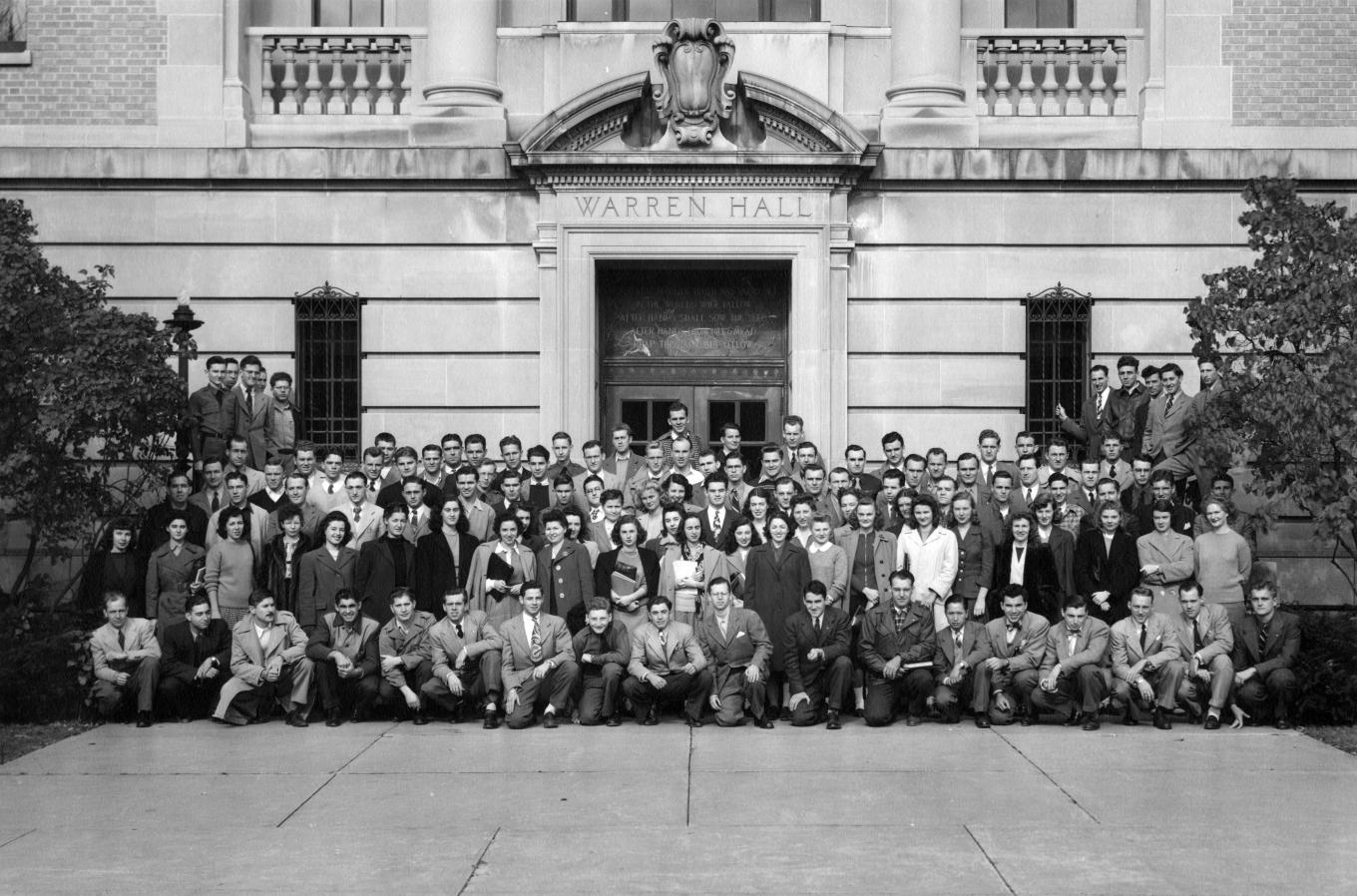
With 107 undergraduates and 11 graduate students ages 16 to 50, most courses – labor economics, collective bargaining, mediation and arbitration and statistics – were taught in the College of Arts and Sciences.
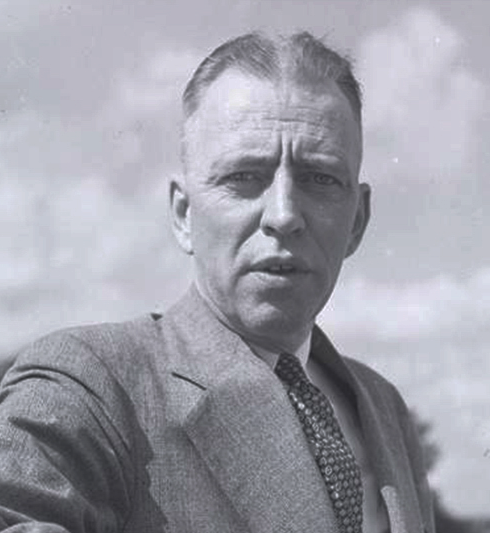
Irving Ives, appointed dean, declines a salary since he is still a member of the state legislature. Warren Hall on the agriculture quad is the school’s headquarters during its first year.
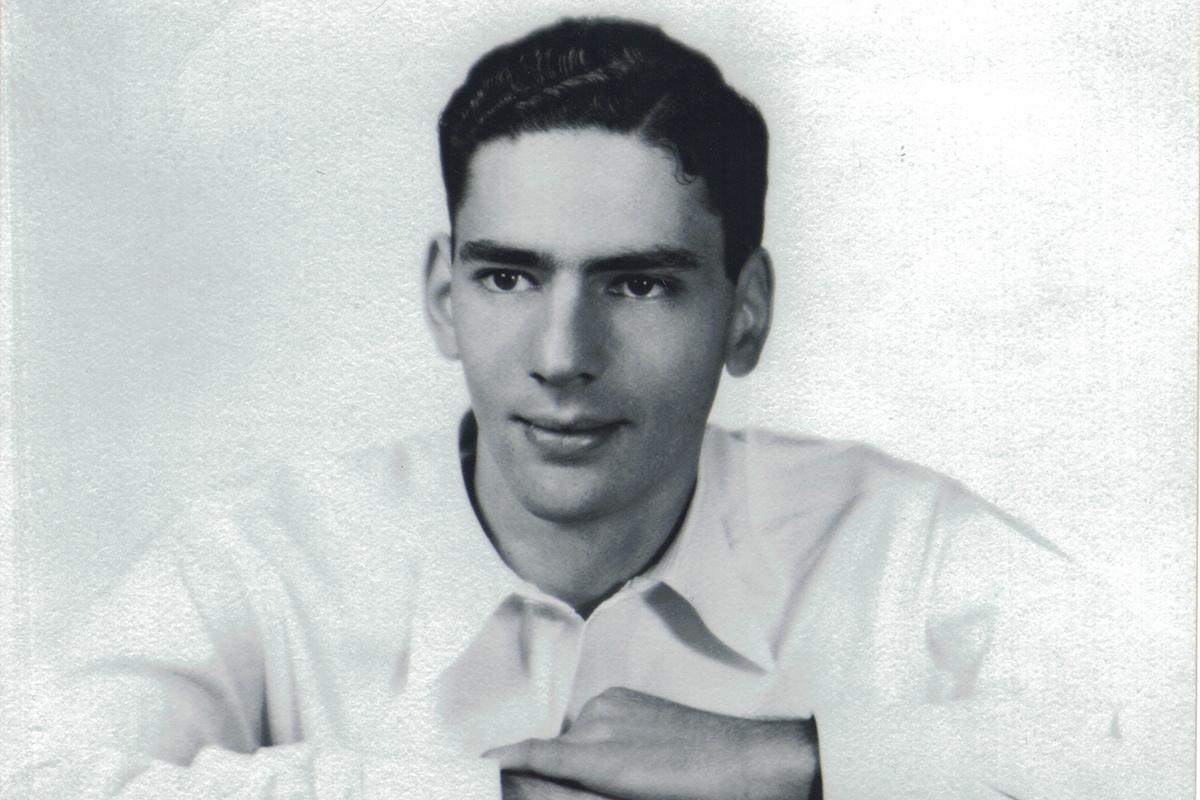
Jerry Alpern ’49, MBA ’50 applied as a transfer student and was accepted into the historic first group of students at the ILR School.
ILR faculty and administrative offices open in 1946 on the engineering quad in rectangular barracks previously used for WWII training programs.
The first iteration of ILR’s library was in Warren Hall with a one-volume collection, a dictionary. Later, a Quonset hut on the quad becomes the library.
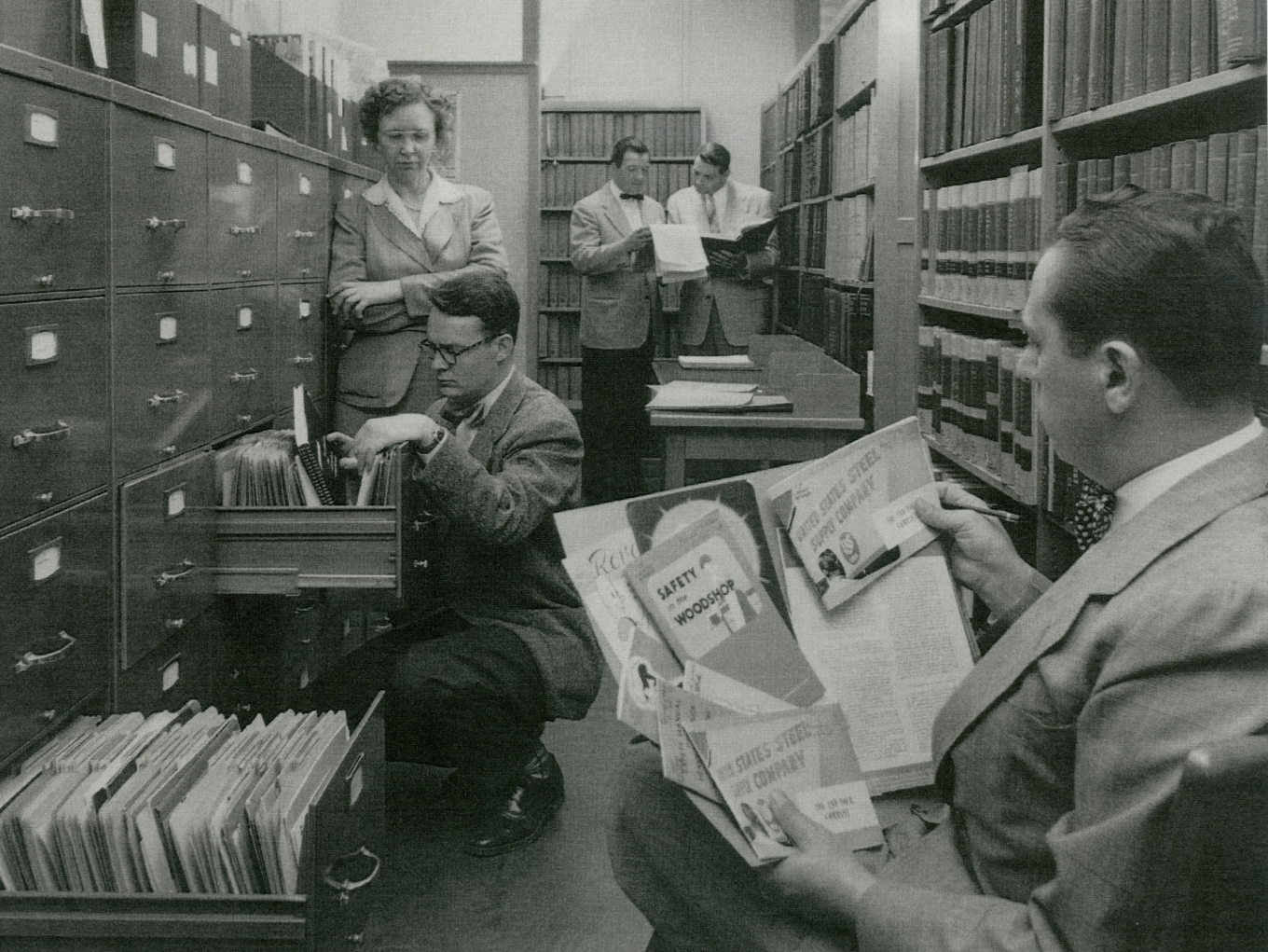
In 1949, Lee Eckert (standing, far left) was selected to establish the Labor-Management Documentation Center, which would become the Kheel Center in 1996.
In 1947, ILR awards its first degrees, including a doctorate, to 14 men and women, and begins publication of the academic journal “ILR Review,” which continues today.
The school's first Extension locations for outreach to the public are established in Buffalo in 1946 and in NYC in 1948.
1950s
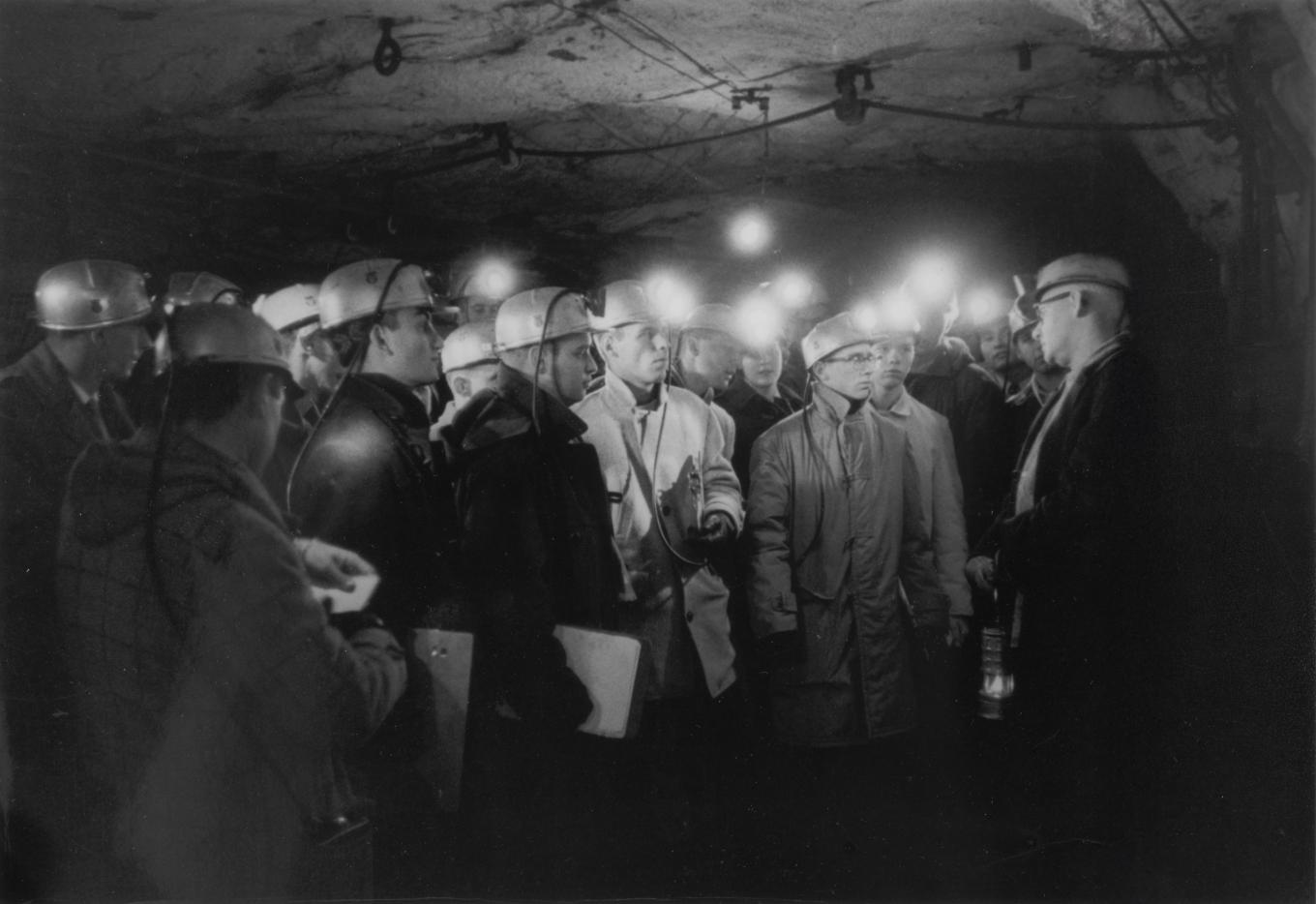
“The State is Our Campus” is the mantra of ILR Extension. Tens of thousands of men and women are trained in practices aimed at giving labor and management effective voices at the bargaining table.
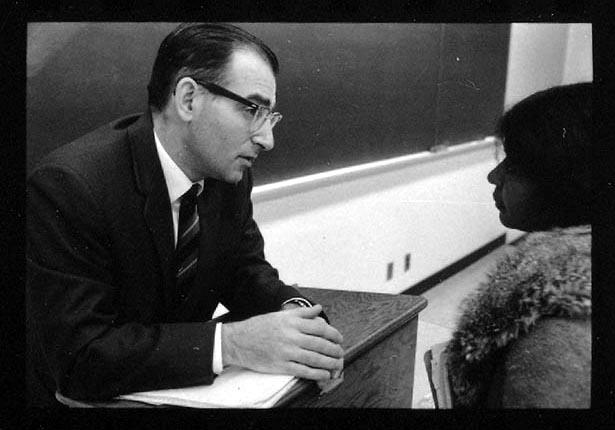
Professor John P. Windmuller created the school’s first course in international and comparative relations and established ILR’s International Institute of Industrial and Labor Relations.
Read More
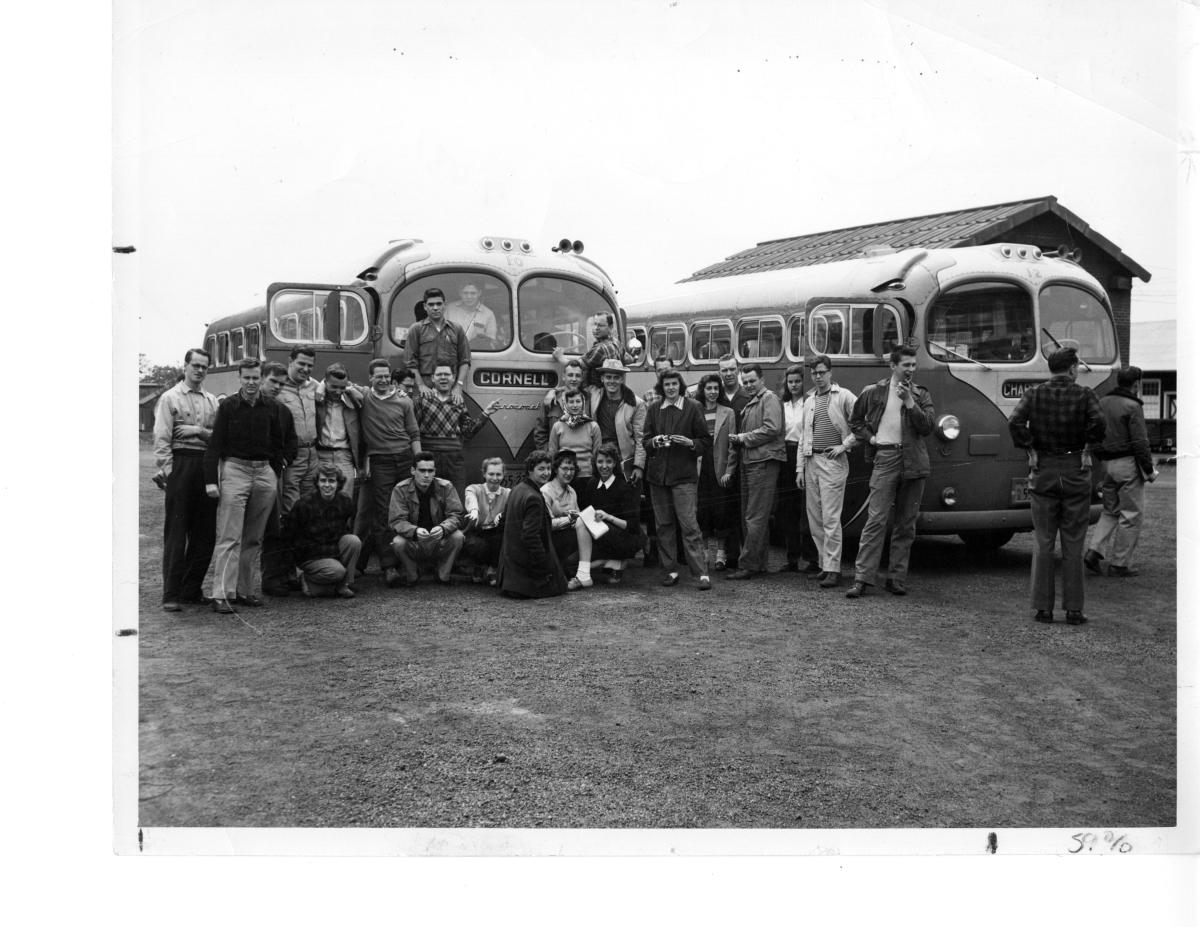
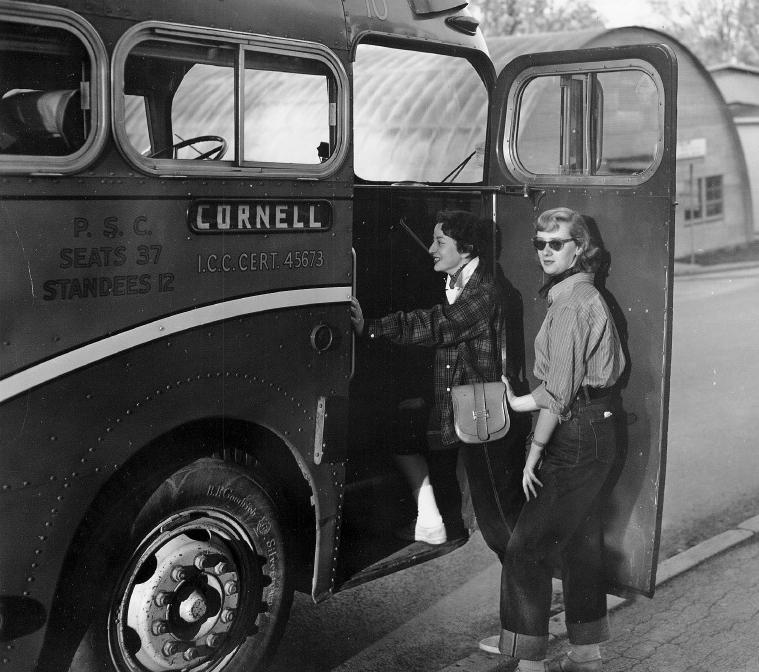
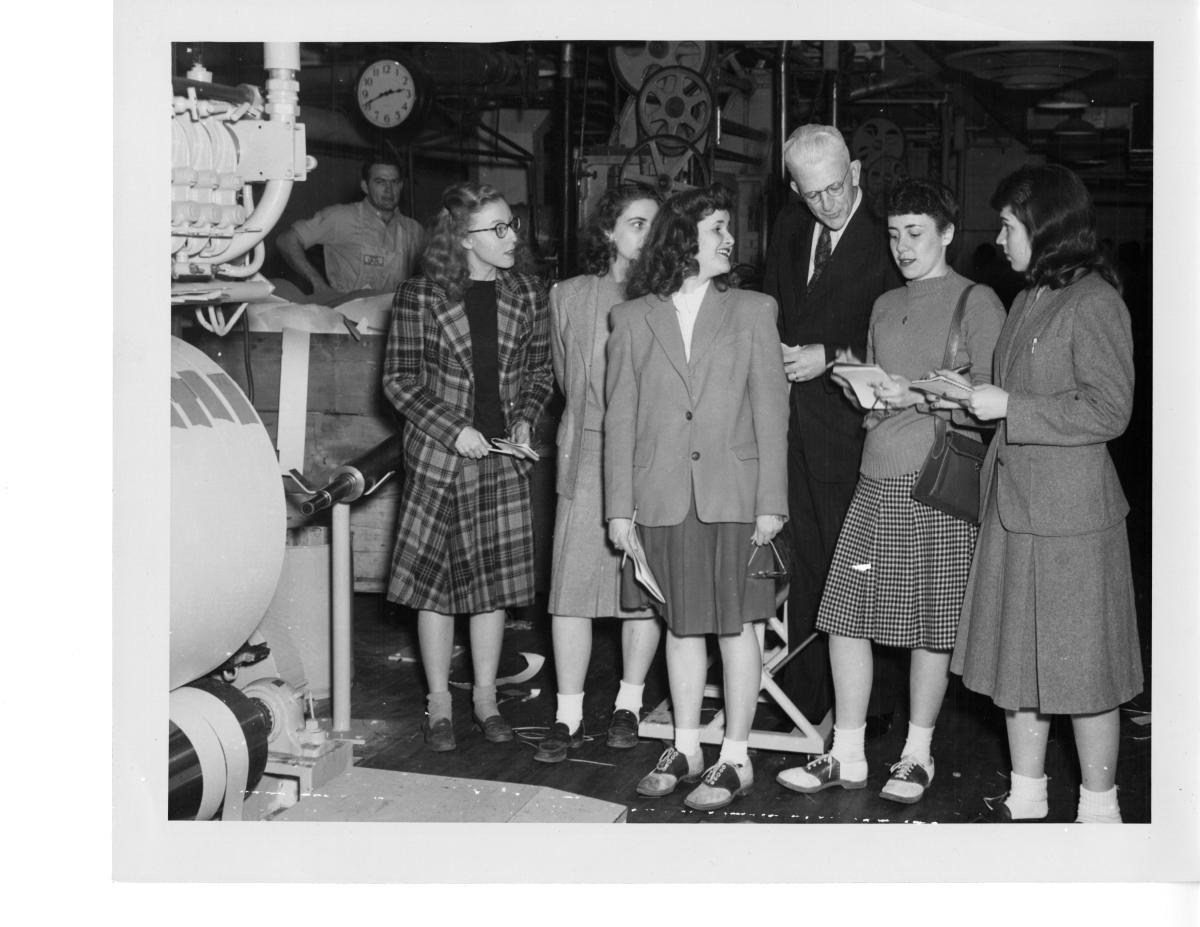
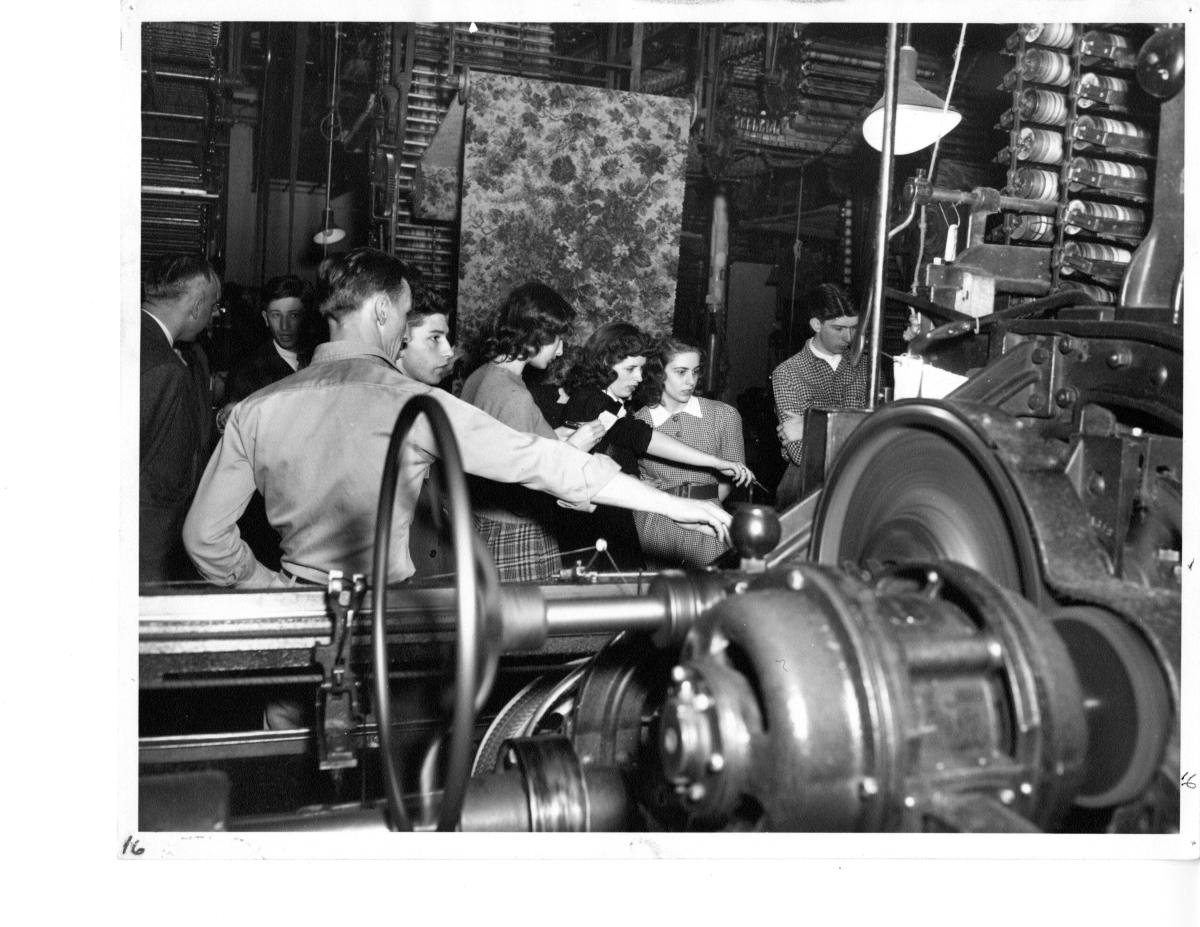
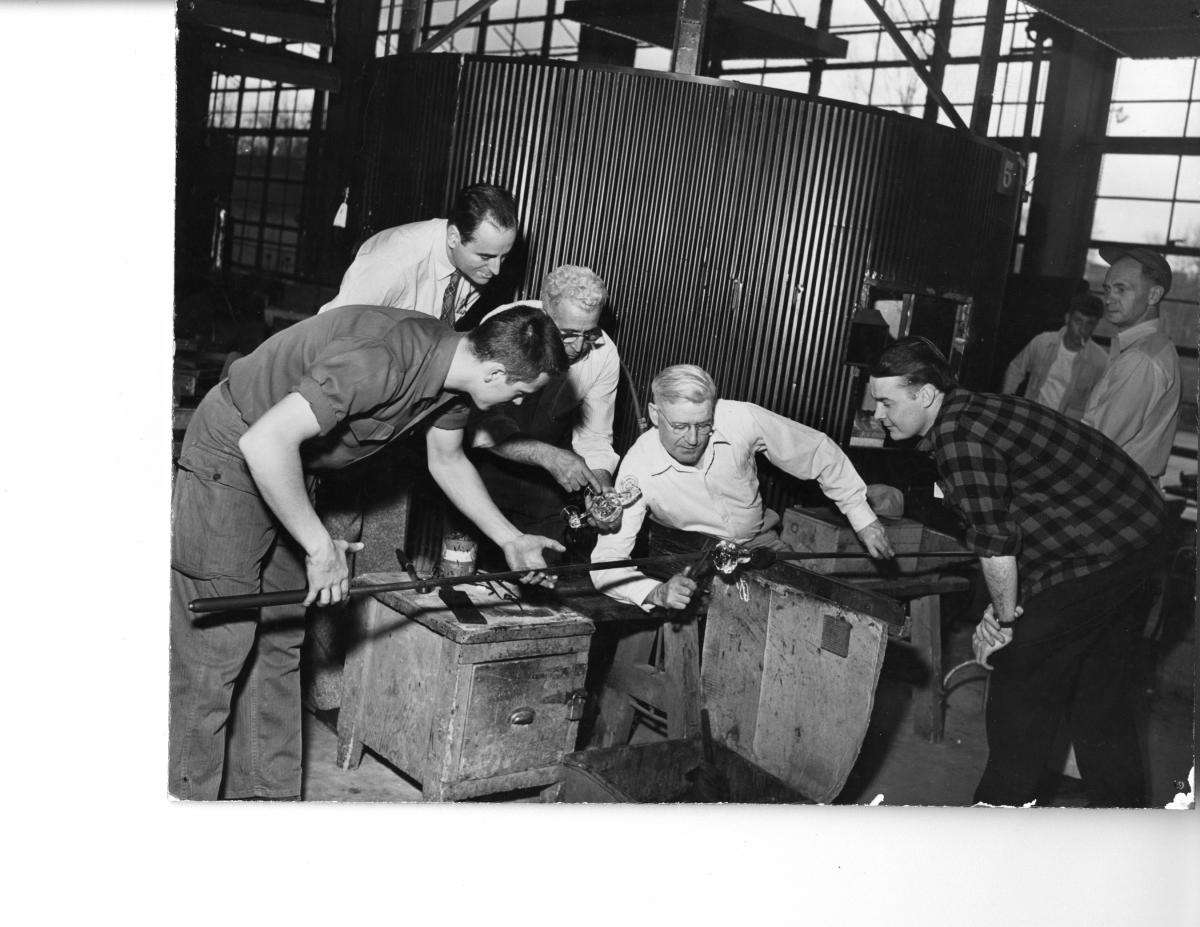
ILR’s bus-riding class begins, taking students into factories, mines and other workplaces in New York state and Pennsylvania.
ILR professors conduct research and shape programs in Italy, Australia, Liberia, Latin America, Ghana, Jamaica, Germany, Chile and Turkey.
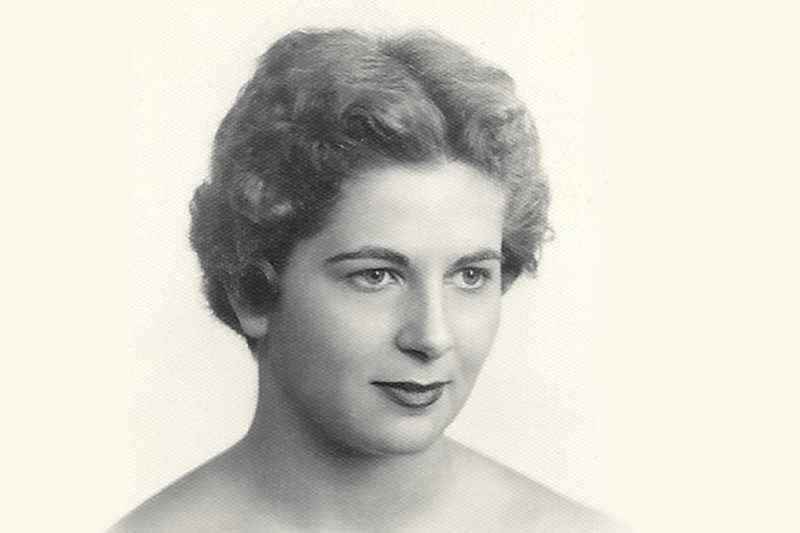
"The elevator for miners had straps descending from the ceiling. I was too short to grab a strap, but my stalwart male classmates propped me up."
- Barbara Loreto Peltz '55
Read Barbara's Story
1960s
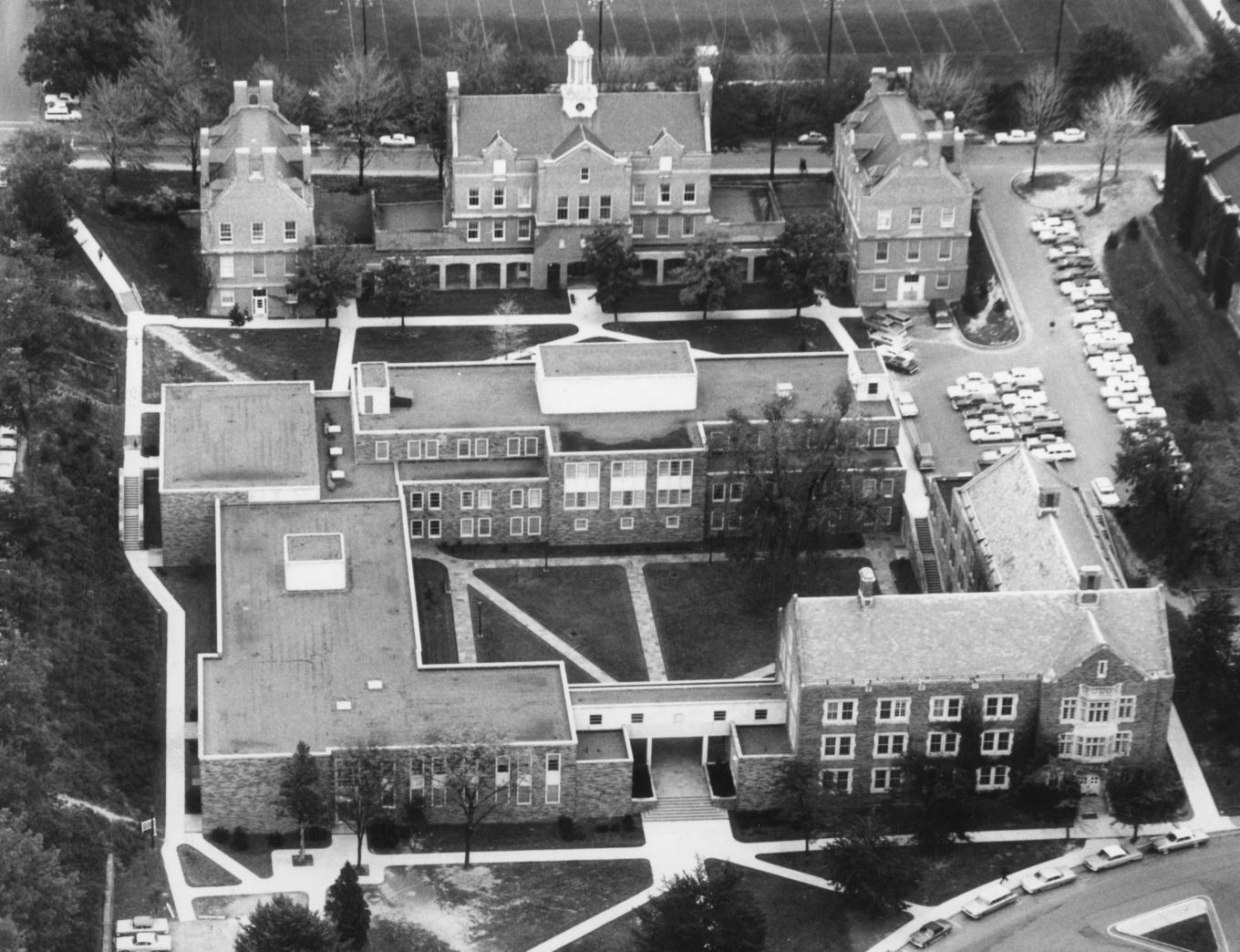
After 17 years on the engineering quad, ILR moves into four buildings – what is now Dolgen Hall, the ILR Conference Center, the Research Building and the Ives faculty building – that had served as the Cornell veterinary school’s surgery, blacksmith shop, laboratories, and large and small animal clinics.
ILR’s commitment to employment for people with disabilities was formalized in 1968 with the establishment of the institute that would grow into today’s Yang-Tan Institute.
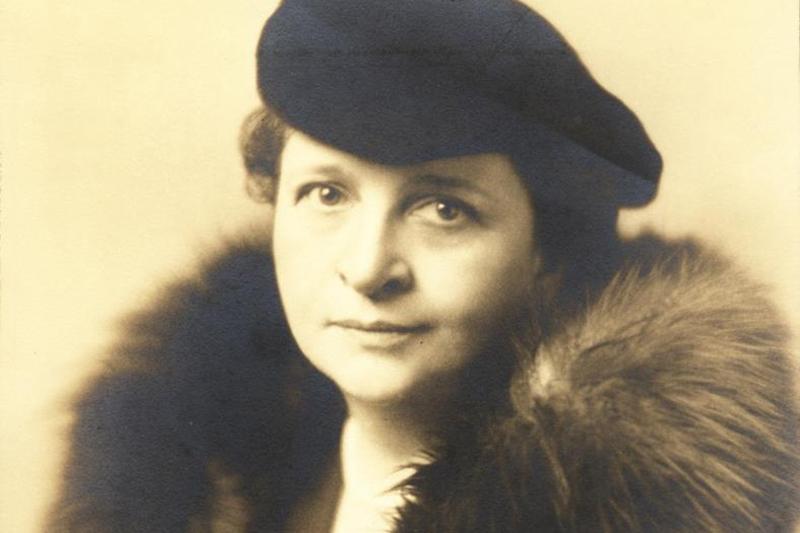
Former U.S. Secretary of Labor Frances Perkins, "mother of the New Deal," lectures at ILR until her death in 1965. Her appointment represents the school's long-standing commitment to teaching excellence.
Read More
International work widens with studies on issues in Peru, Europe, Russia and elsewhere.
1970s
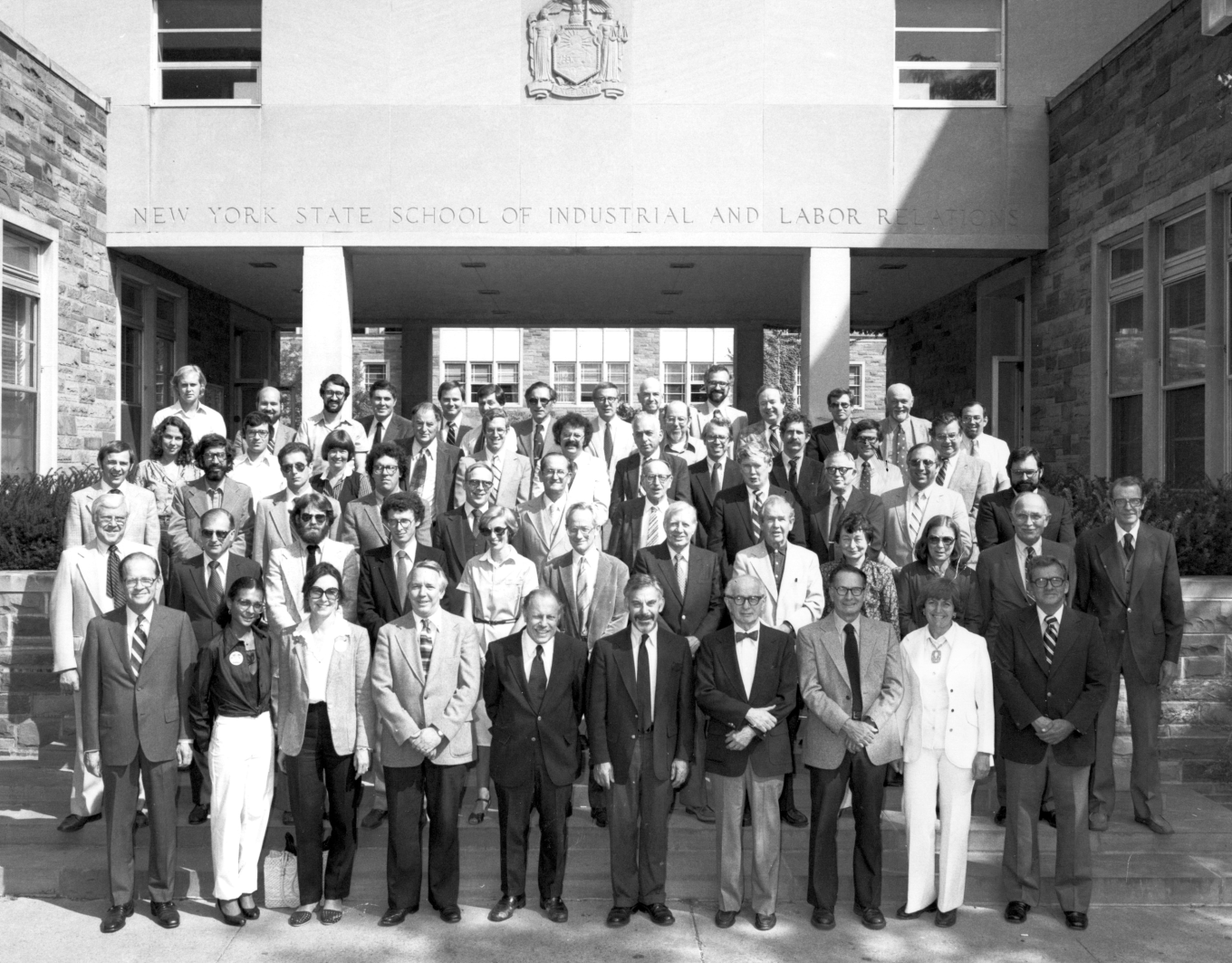
As many members of ILR's original faculty begin to retire, the school's second generation of faculty is hired. Many of those professors help define contemporary labor economics, organizational behavior, human resources and other fields.
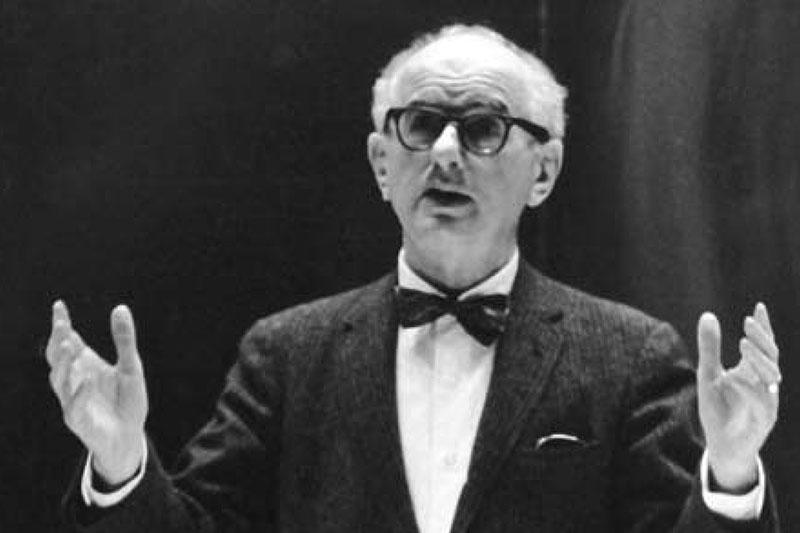
The “American Ideals” course taught by Professor Milton Konvitz beginning in 1947 continues to 1974. Thousands of Cornellians, including Ruth Bader Ginsburg, A&S ’54, considered it foundational to their university experience.
“Women at Work” and “History of the Black Worker in the United States” courses are introduced.
The Cornell Organization for Labor Action and the Minority ILR Student Organization form.
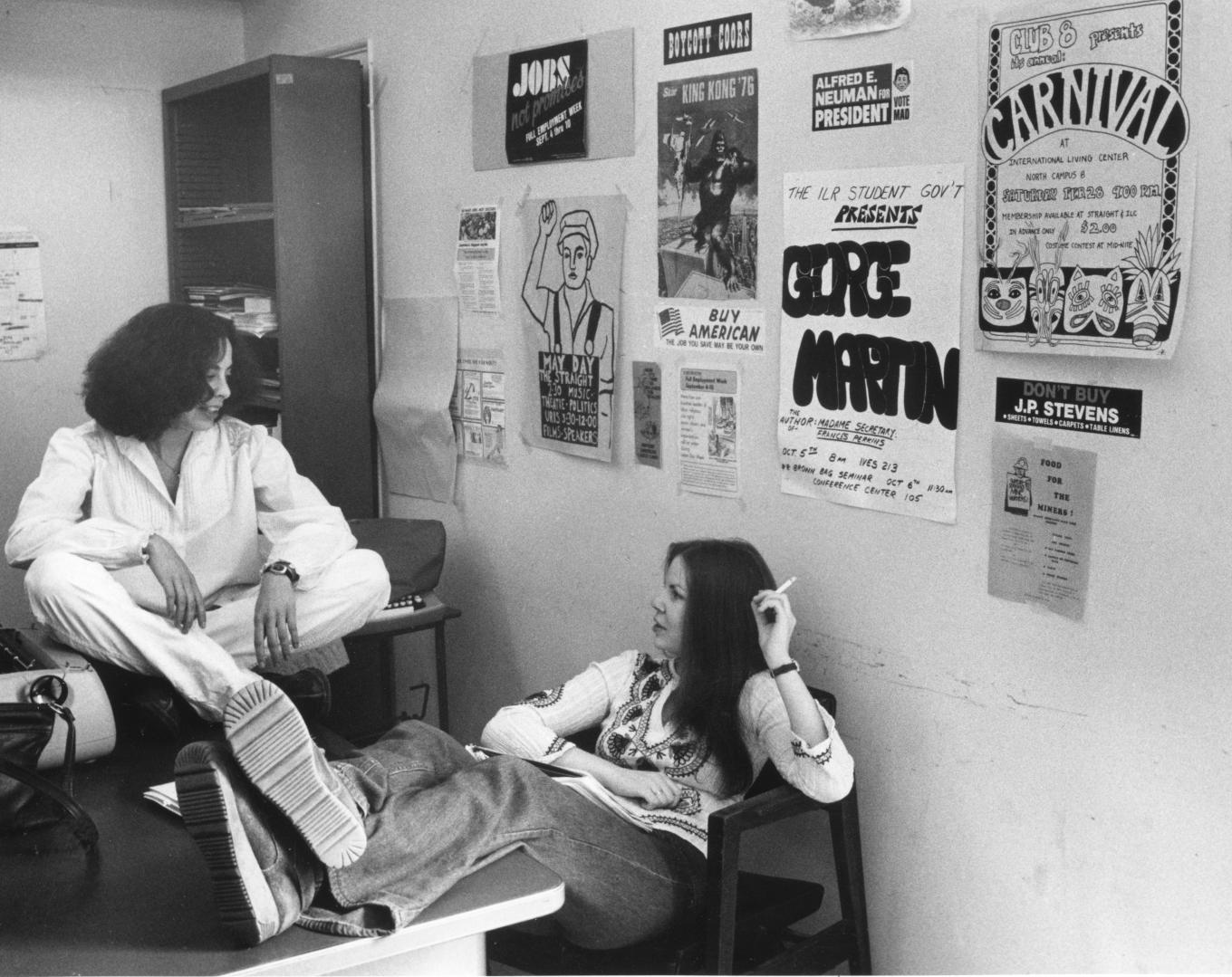
The profile of women rises across the country and at Cornell. More women than men are admitted to ILR as ILR research and programming around issues involving women in the workplace increases.
1980s
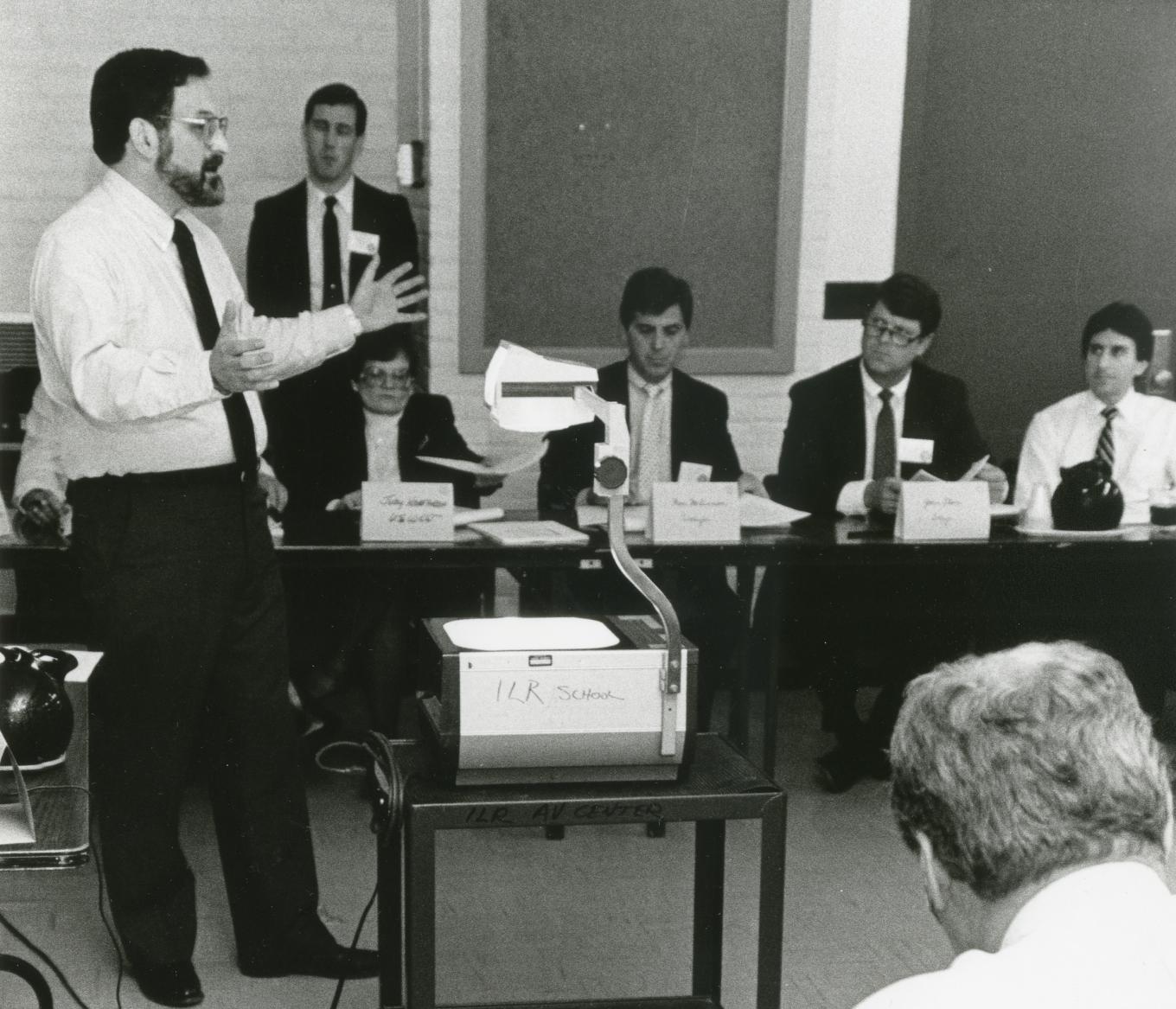
More emphasis is placed on human resource studies and organizational behavior courses as the school adapts to a decline in unionized workplaces. While labor relations remain a core component of the curriculum, collective bargaining is no longer the overriding academic focus.
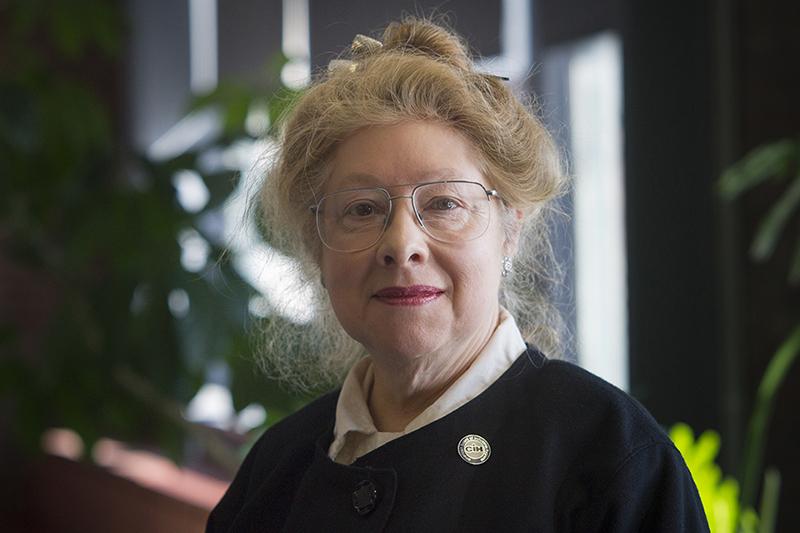
The Chemical Hazard Information Program, which grew into what is now the ILR Workplace Health and Safety Program, starts in 1986. Nellie Brown joins the program a few months after its founding and continues today as its director.
The Center for Advanced Human Resource Studies, connecting faculty, students and global organizations, is established in 1988.
ILR receives its first major endowment – $2.5 million from the R. Brinkley Smithers Foundation to support research on alcoholism in the workplace. The Smithers Institute continues to conduct national research.
1990s
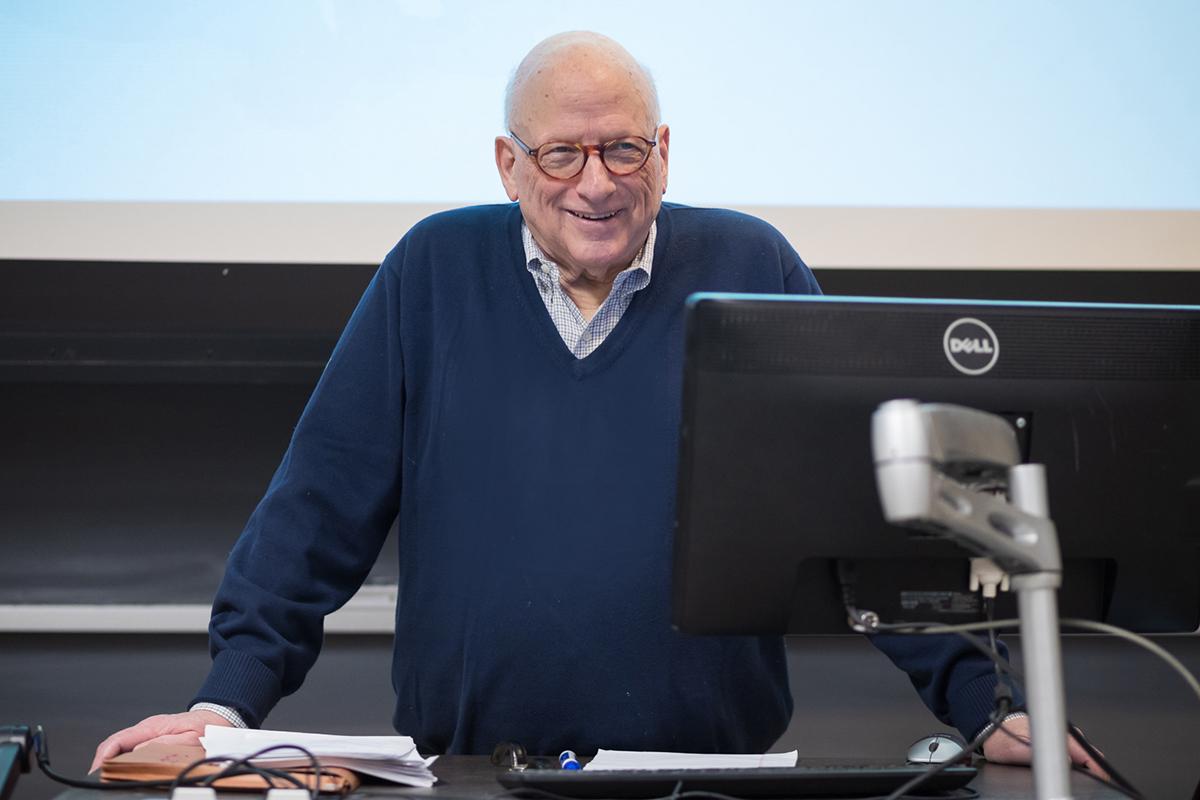
As dean from 1988 to 1997, David B. Lipsky '61 oversaw construction of ILR's Catherwood Library and new classrooms, and the renovation of Ilves Hall West.
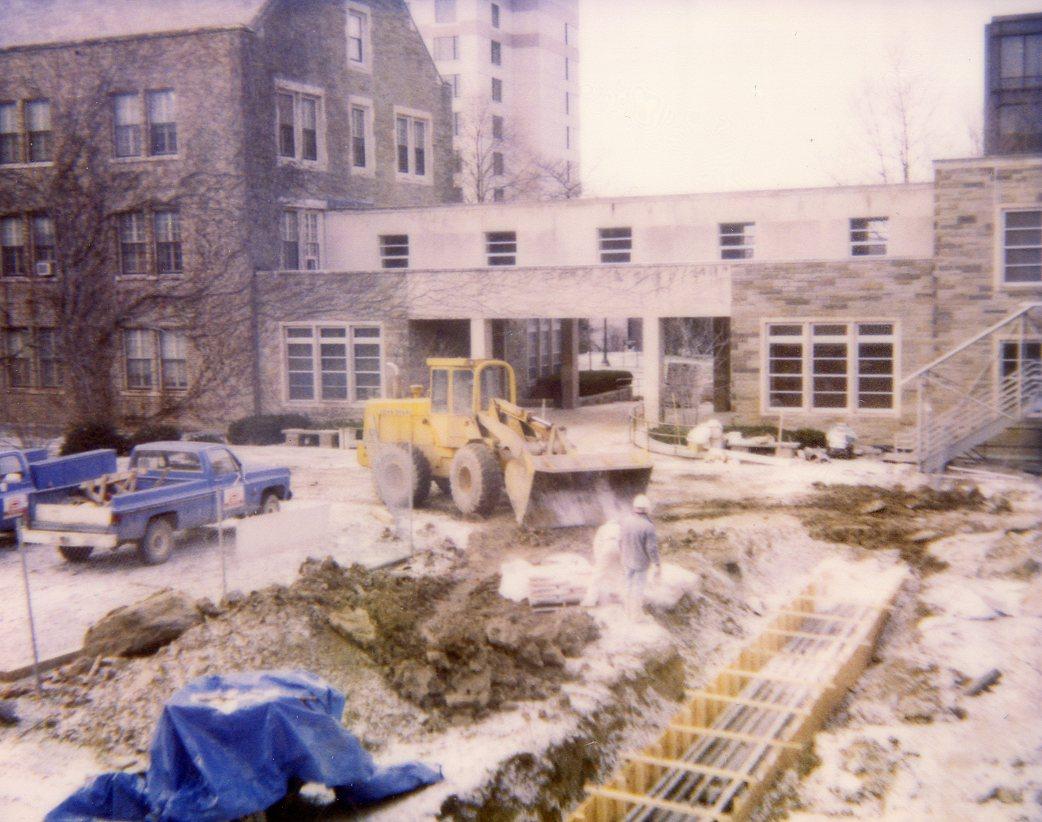
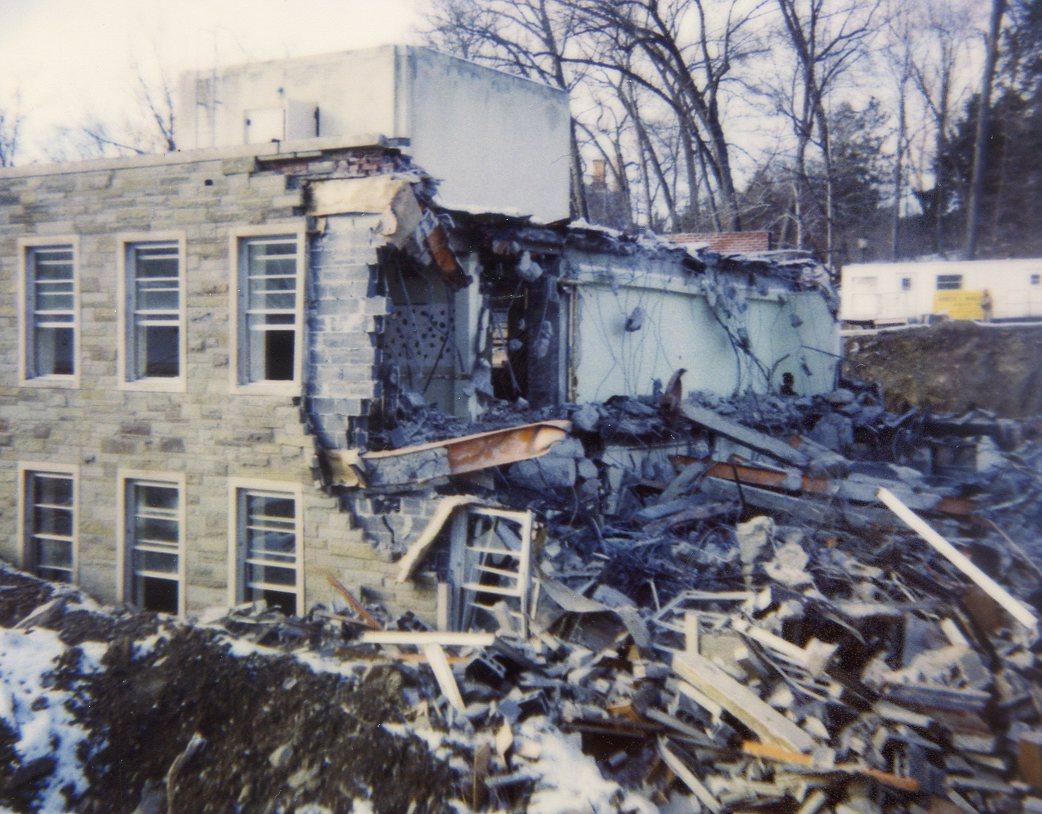
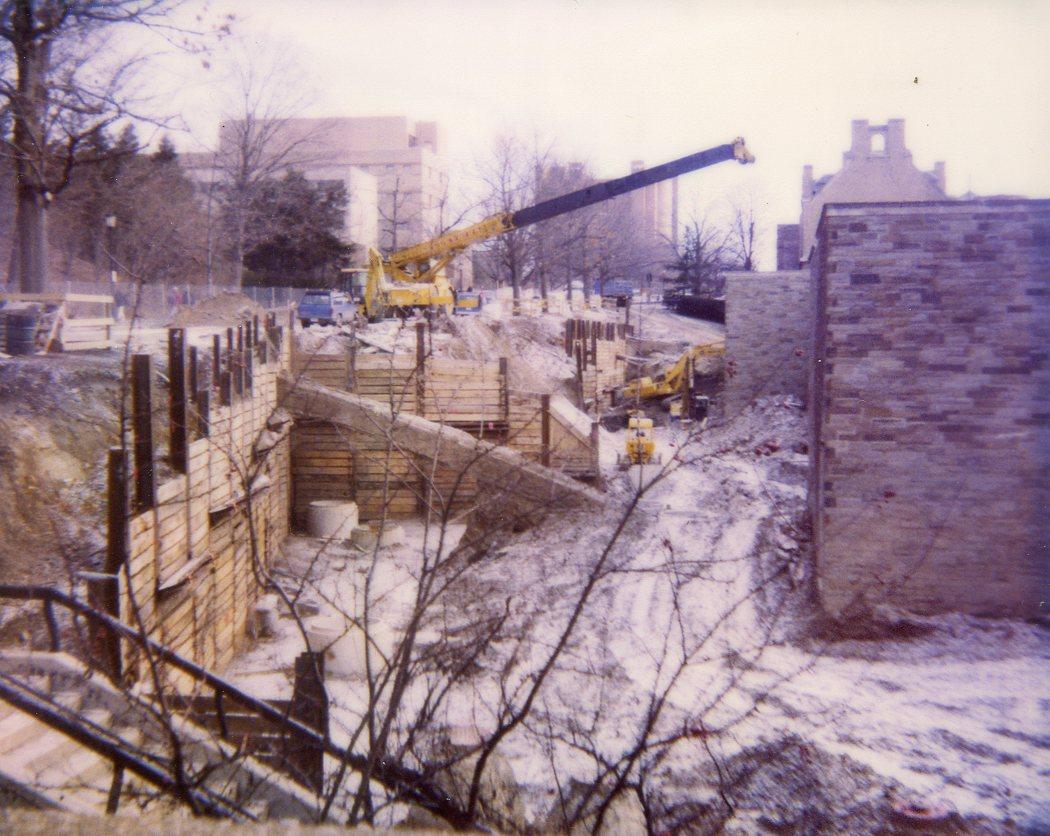
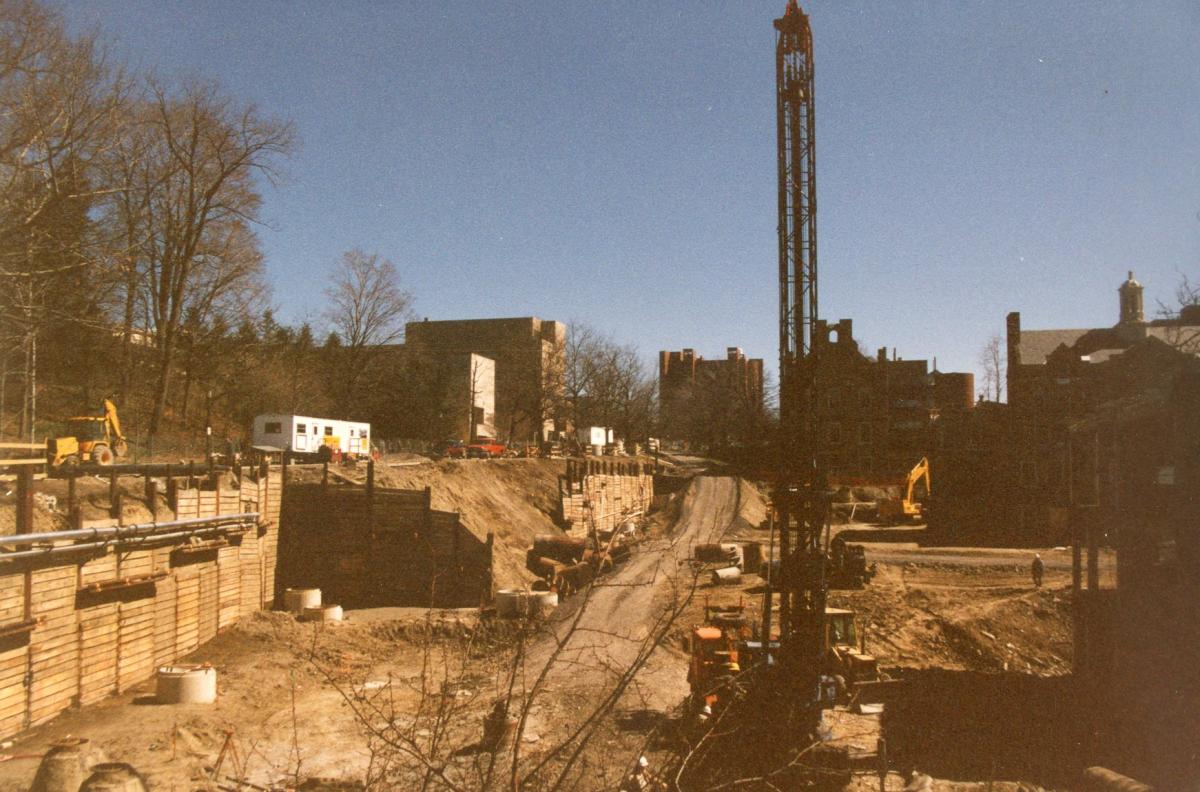
ILR undergoes a major physical expansion when structures on Tower Road are torn down. Students attend classes in locations across campus until the new classrooms open in 1998.
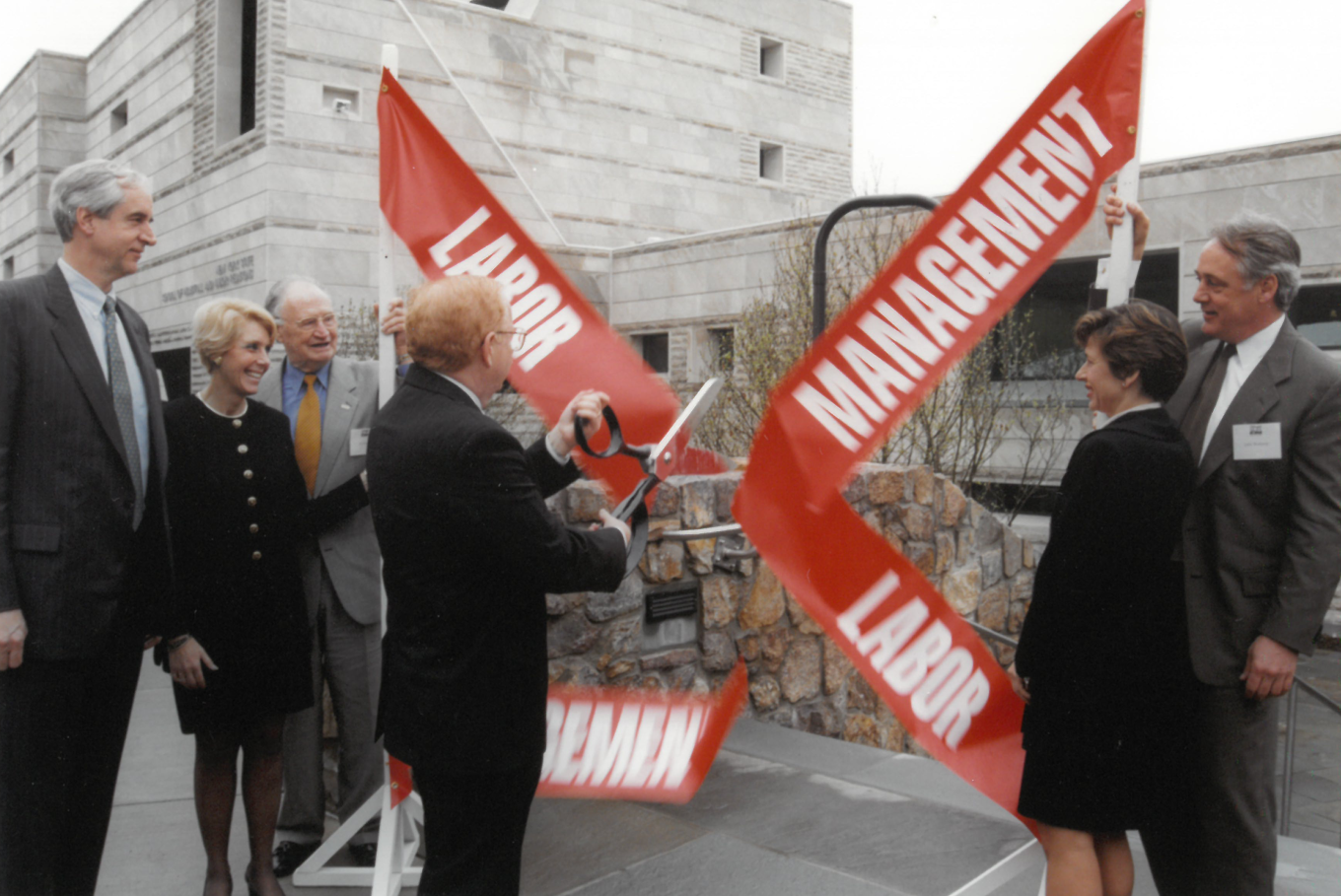
The new Catherwood Library building is dedicated in 1997. Catherwood is the premier labor-management library in North America.
2000s
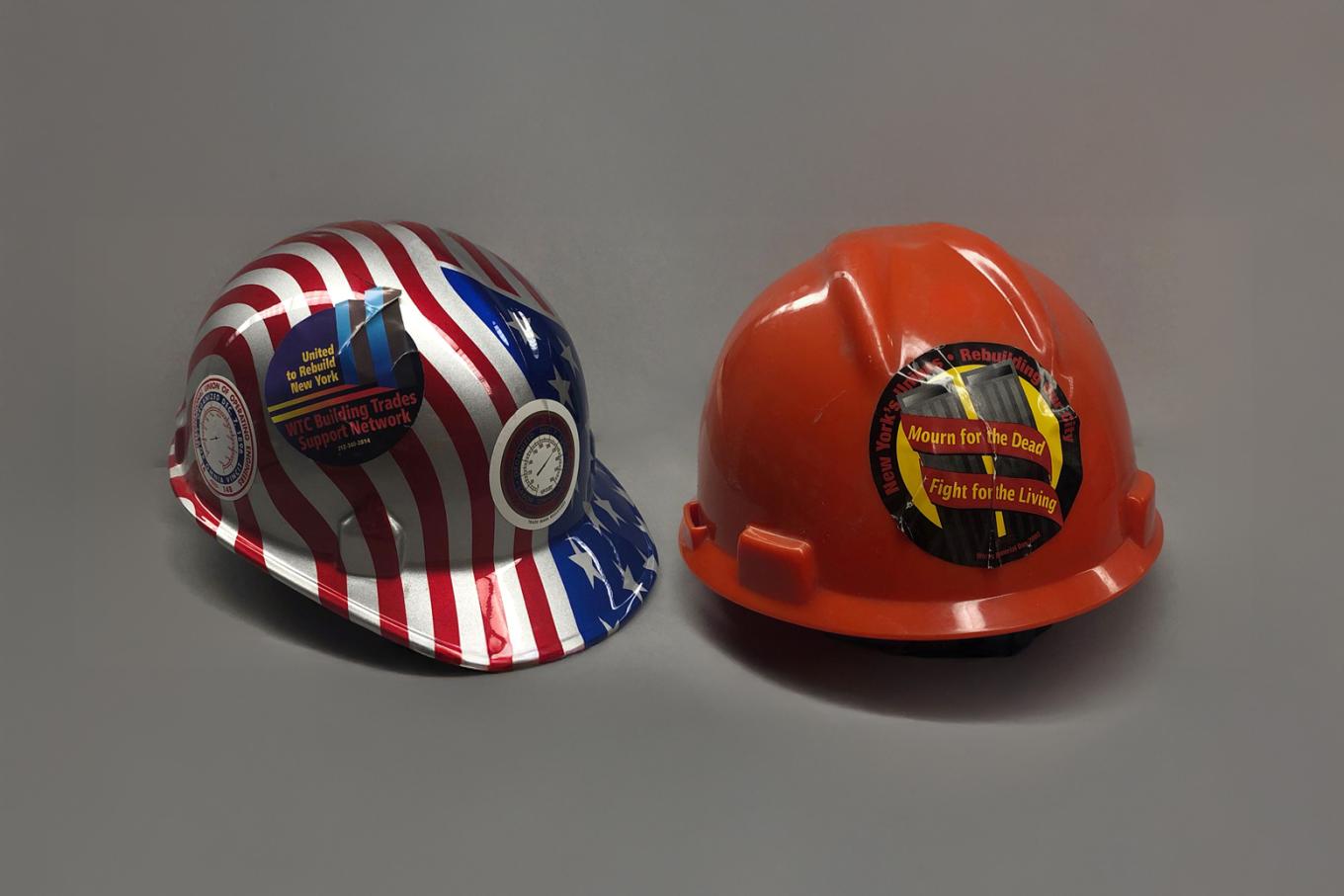
ILR partners with unions to provide assistance to New York City construction workers and firefighters in the aftermath of 9/11.
The NYS AFL-CIO Union Leadership Institute is established in 2001.
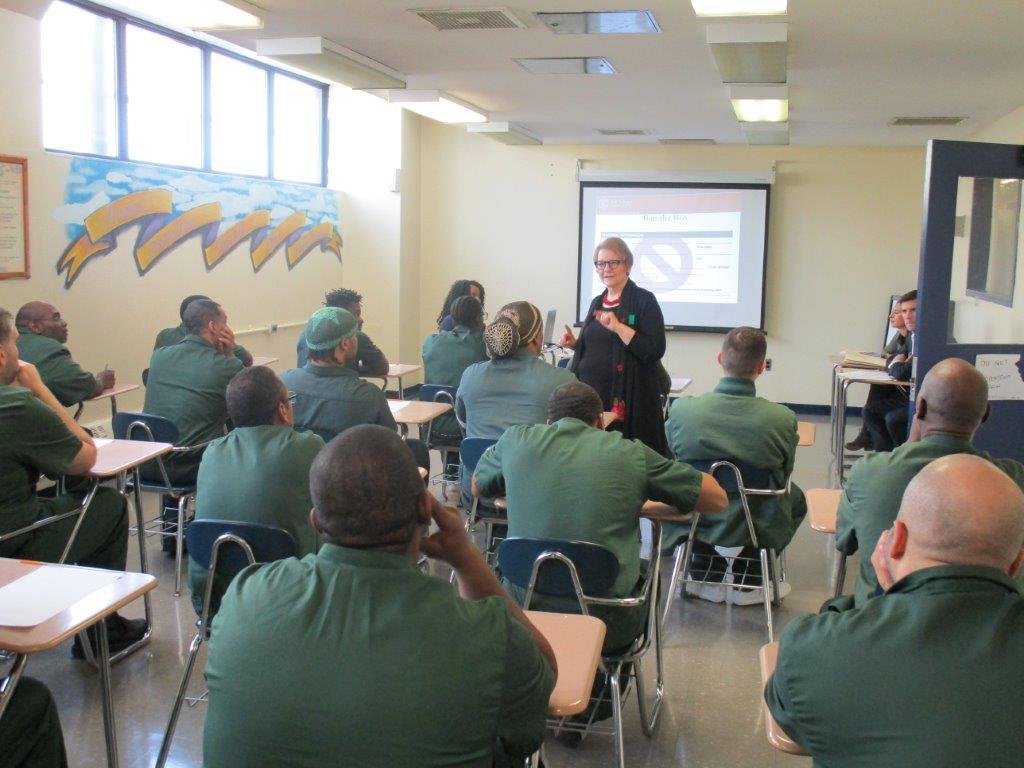
The Labor and Employment Law Program begins its work in social science research, social justice and employment discrimination through national conferences, seminars and training programs. Its Criminal Justice and Employment Initiative was founded in 2014.
The annual Labor Roundtable event bringing labor representatives to campus to talk with students is founded in 2002.
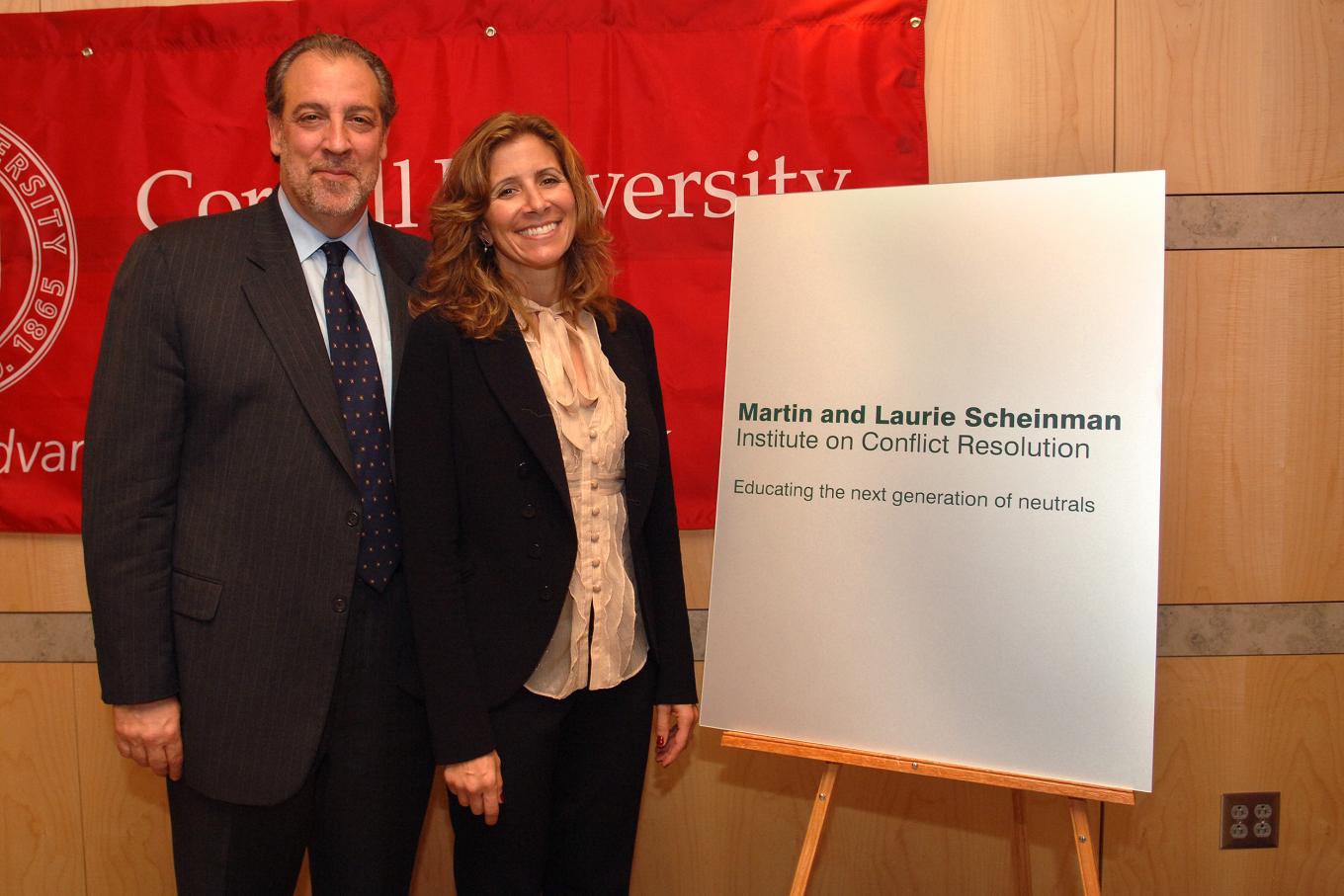
The Scheinman Institute on Conflict Resolution opens in 2007. The only institute of its kind providing undergraduate and graduate education and interdisciplinary research focused on conflict resolution in the workplace.
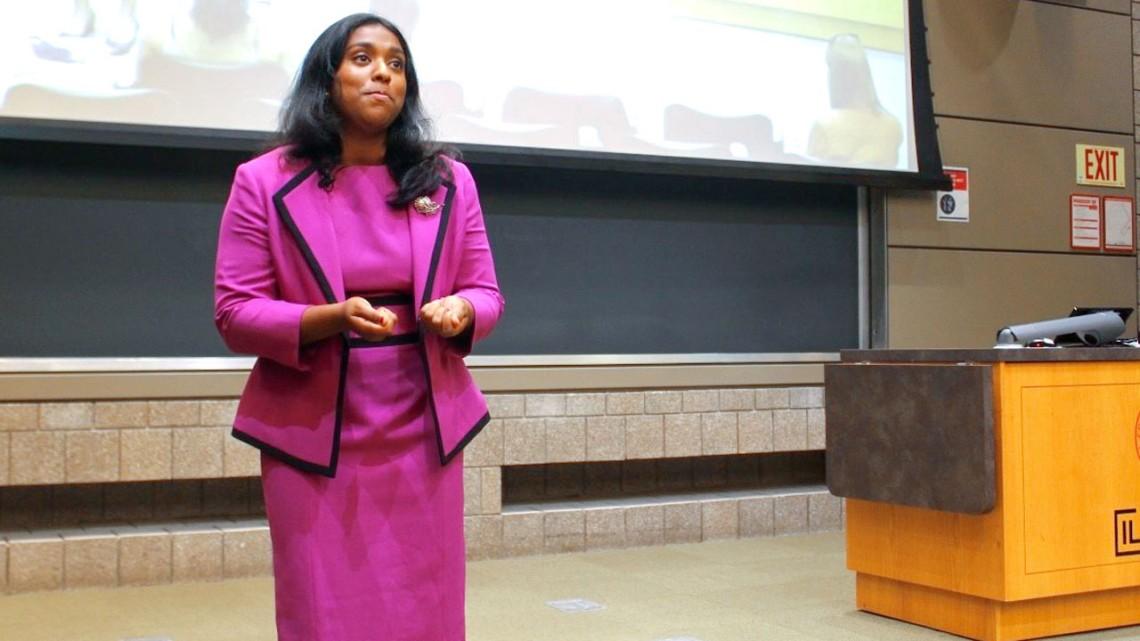
Cornell Speech and Debate moves to ILR from the College of Agriculture and Life Sciences, but continues to welcome students from across campus. Spring 2024 was the most successful season in the team's 40-year history.
Read More
2010s
Three institutes are established.
- The Institute for Compensation Studies in 2010.
- The Labor Dynamics Institute in 2011.
- The Worker Institute in 2012.
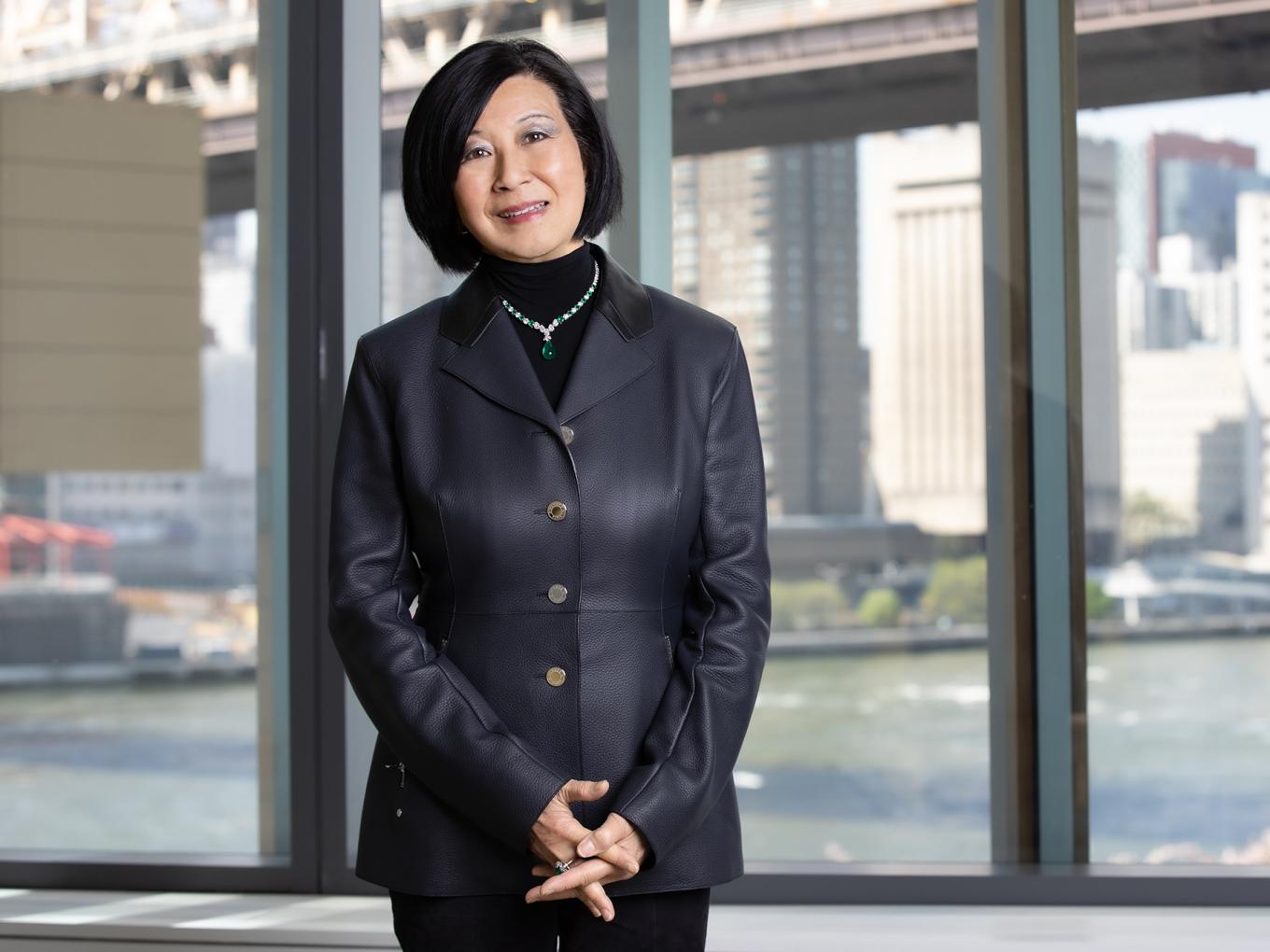
2015
ILR receives a $10 million gift from K. Lisa Yang ’74 to establish the Yang-Tan Institute, deepening ILR’s commitment to connecting people with disabilities with meaningful employment.
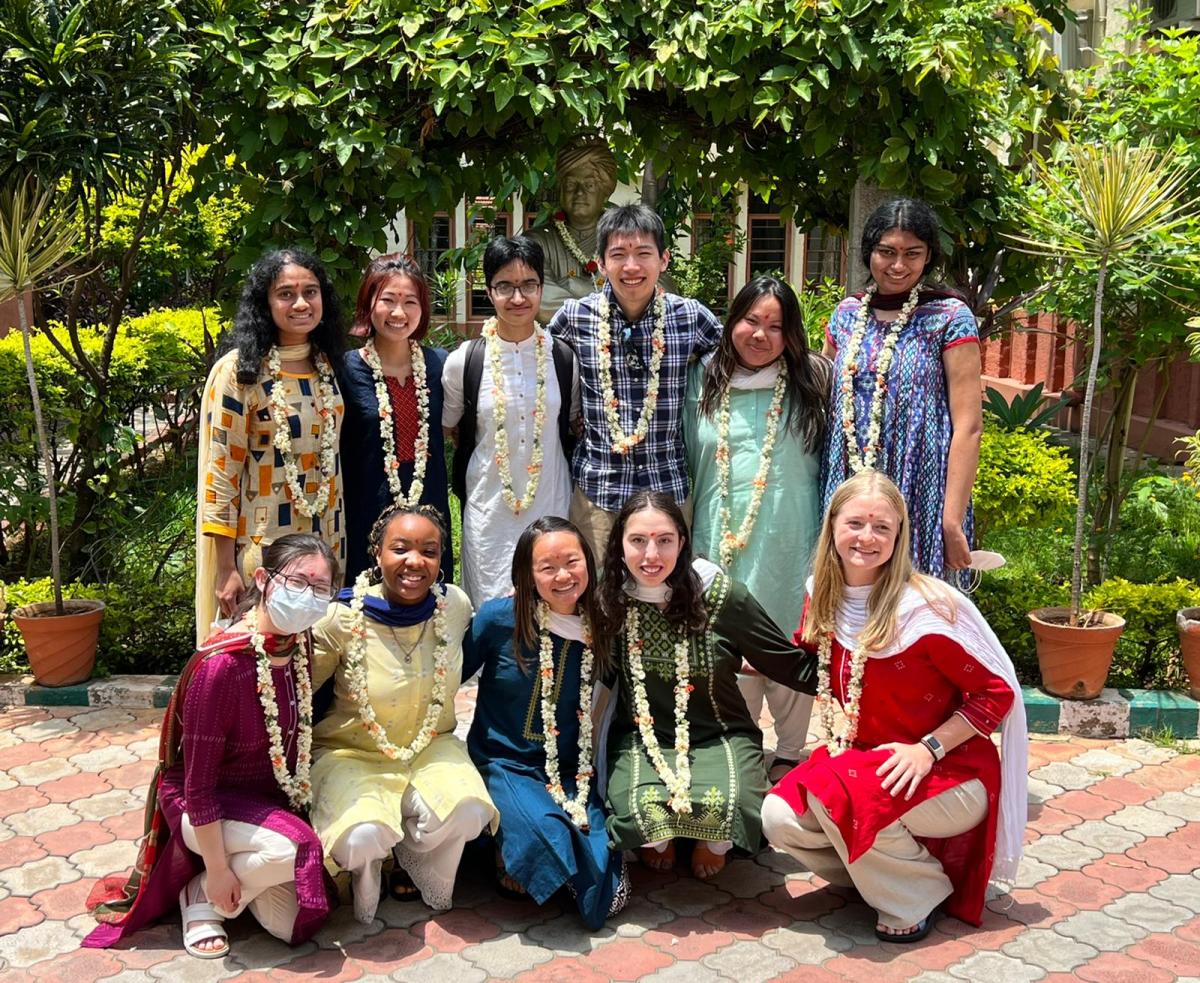
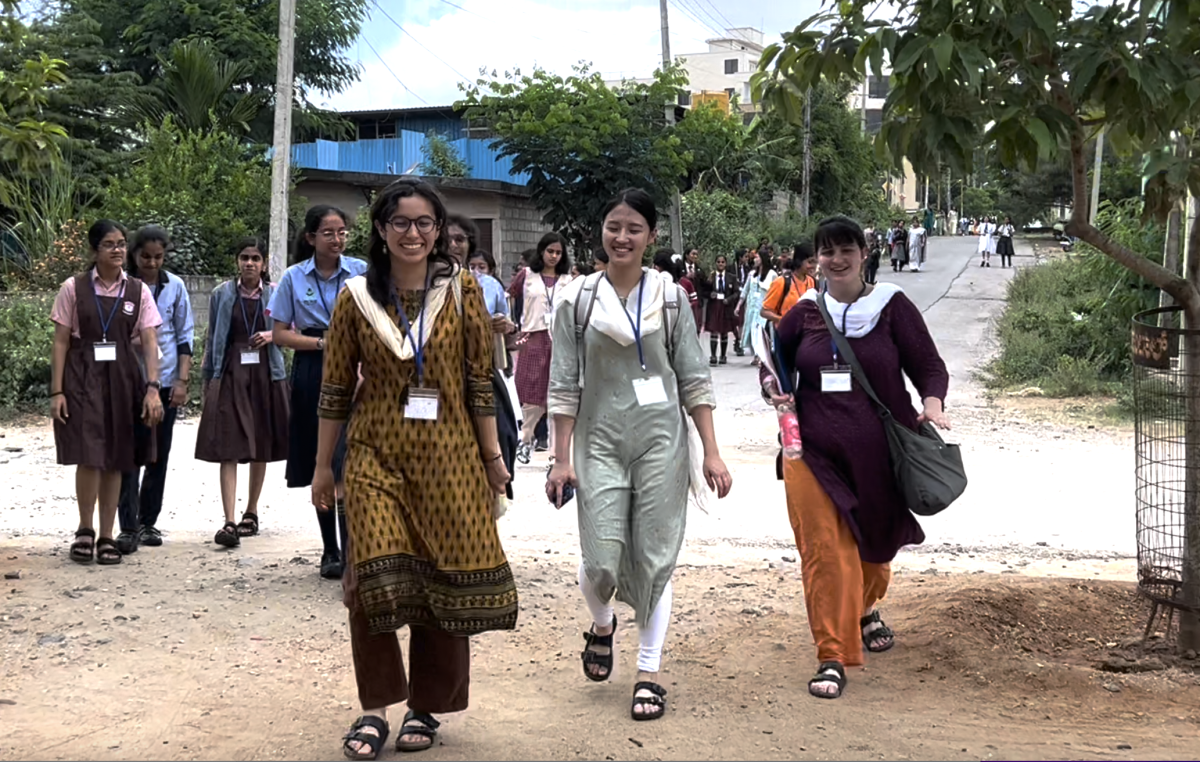
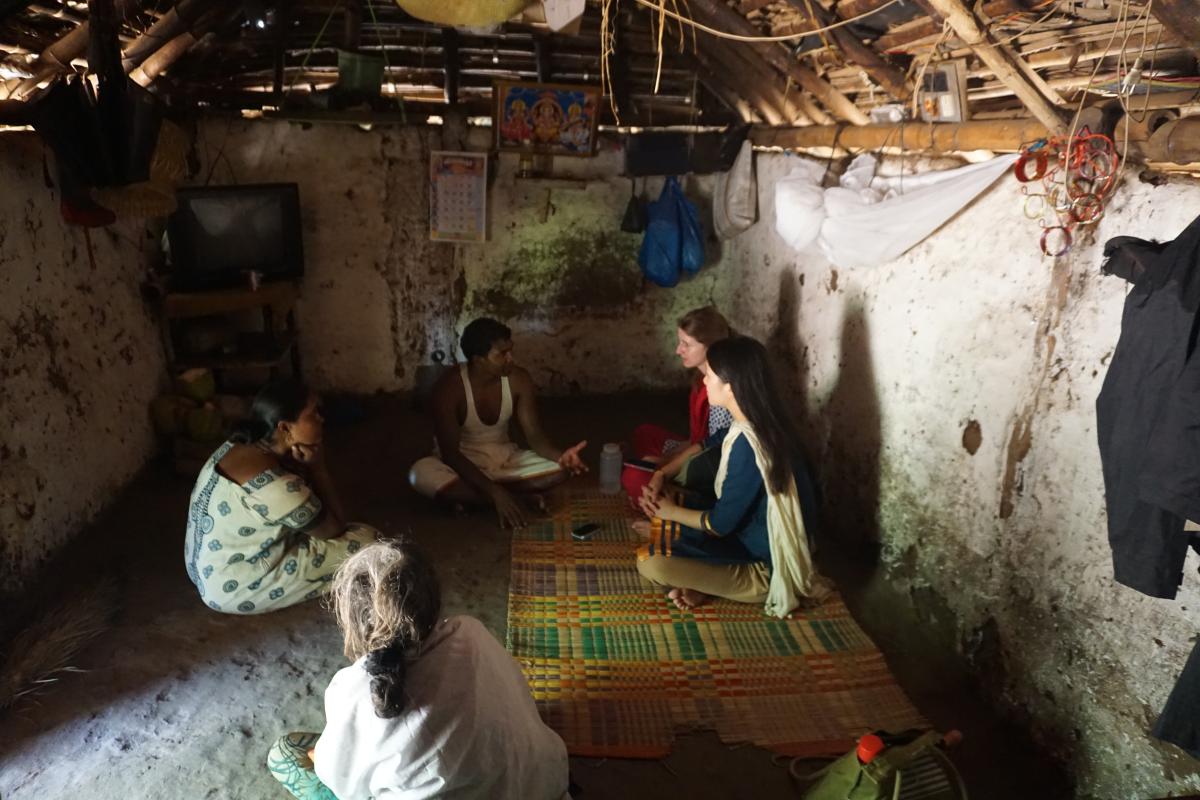
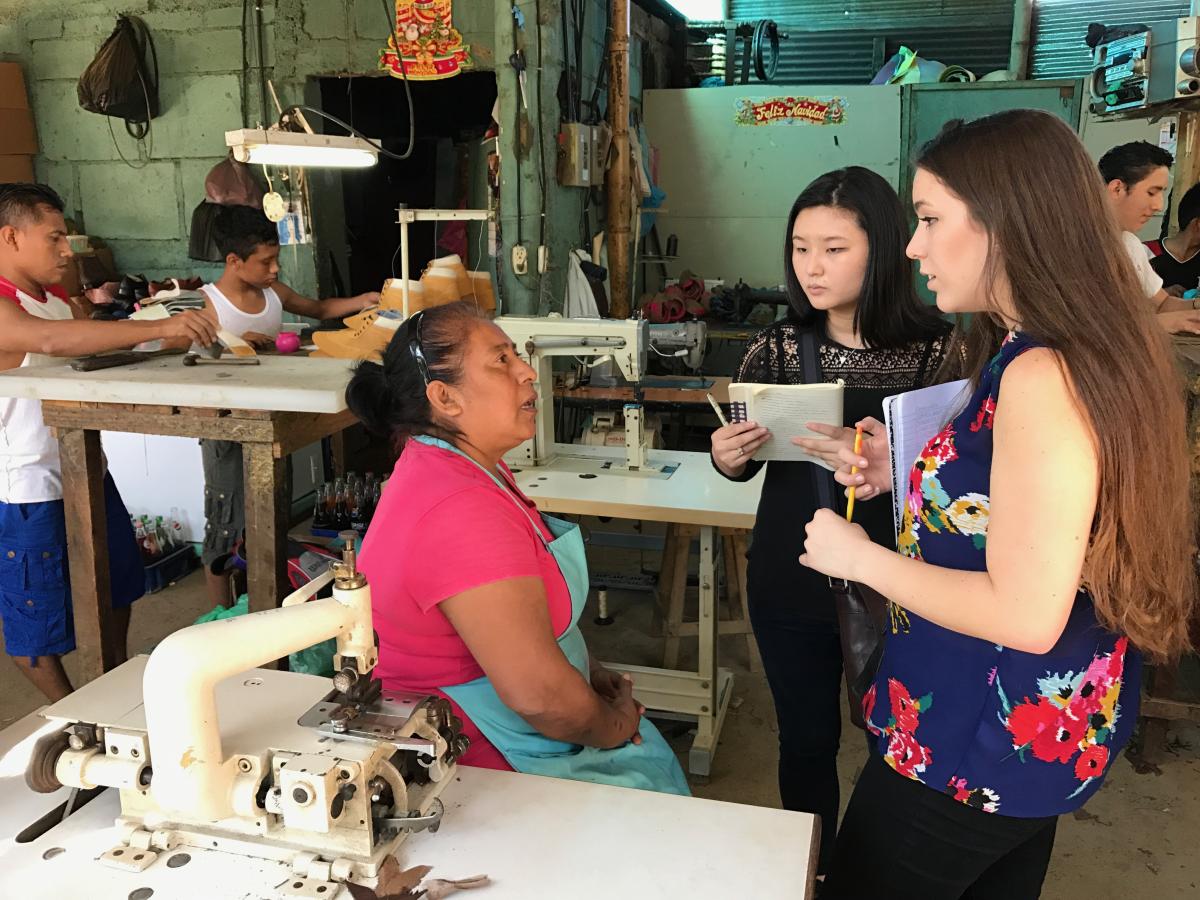
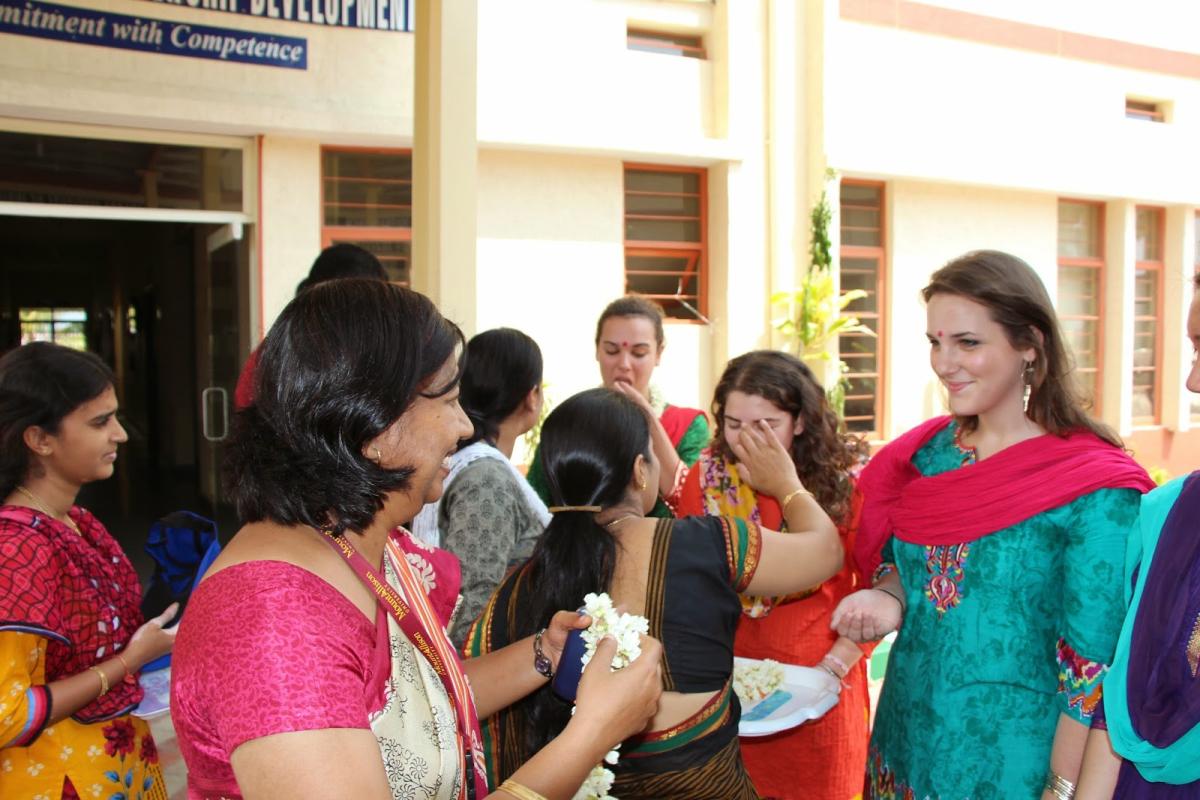
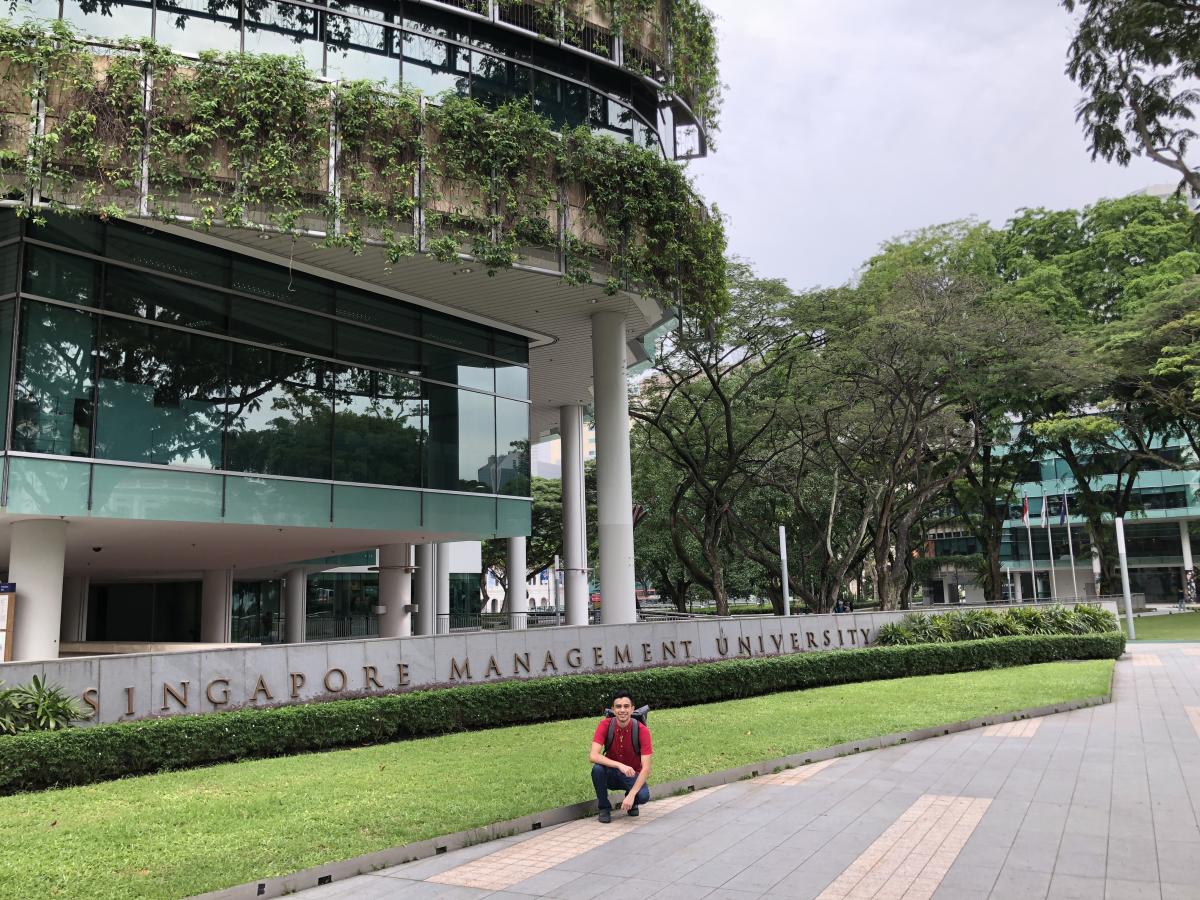
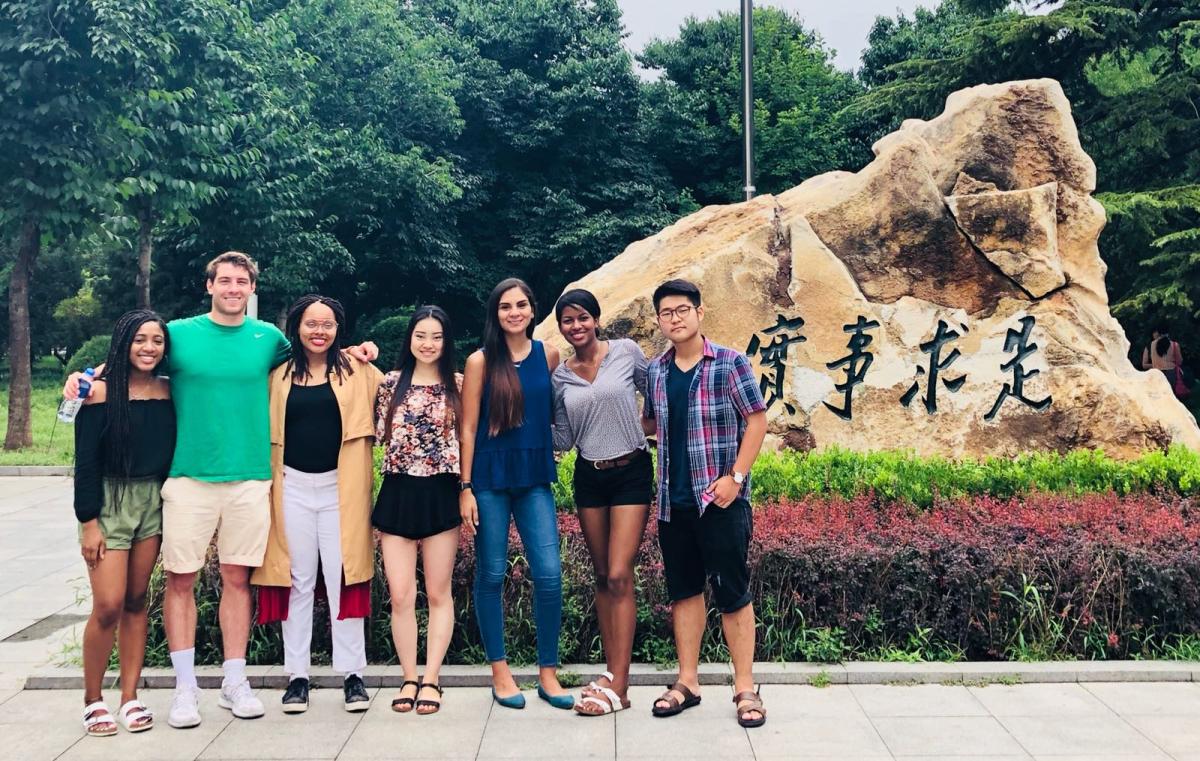
International programs for student experiences expand in Ireland, India and elsewhere. The Global Scholars Program is established in 2012.
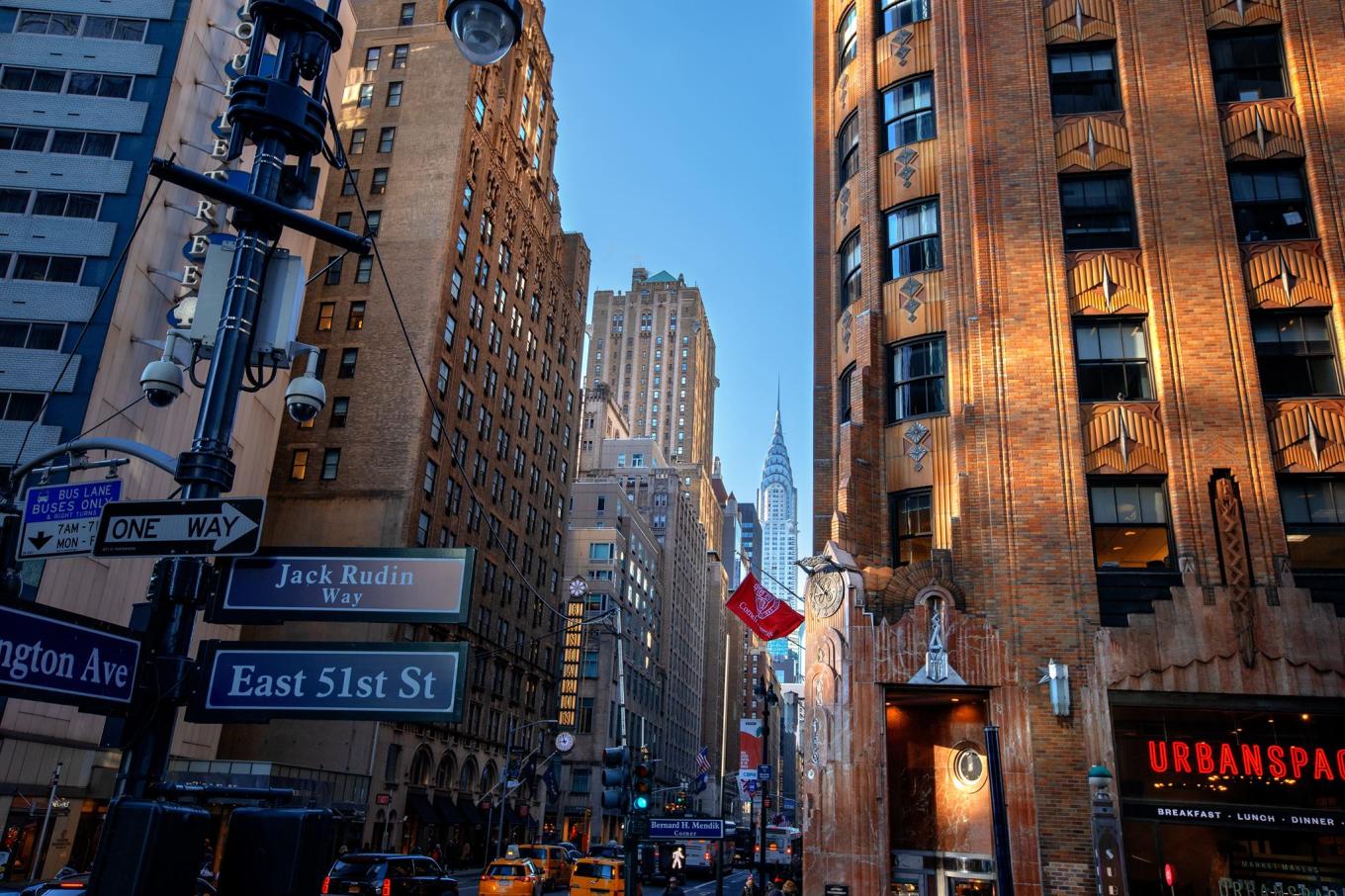
The School of Industrial and Labor Relations’ legacy in the city and state of New York was celebrated Feb. 28, 2019 at the grand opening of its new Manhattan headquarters.
2020s
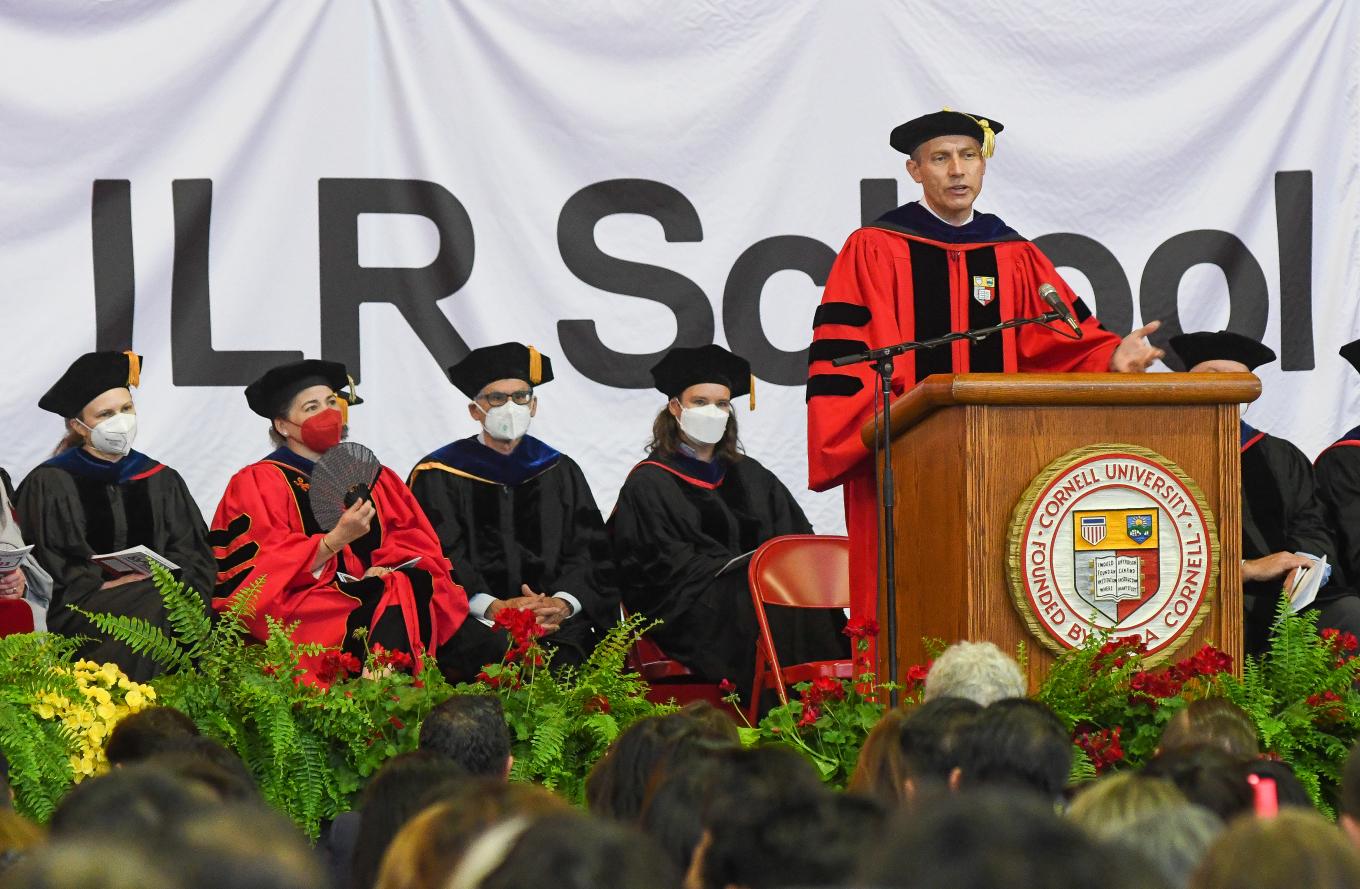
The school’s third generation of faculty is hired, expanding course offerings on new world of work topics. An increased emphasis on data learning and research is reflected in the school’s refreshed curriculum.
Collaboration across the university expands, with ILR forming new partnerships with Weill Cornell Medicine and other entities.
ILR faculty share expertise widely during the pandemic as journalists and the public seek information on COVID-19’s impact on jobs, the national economy, health and safety, work-from-home policies and other issues.
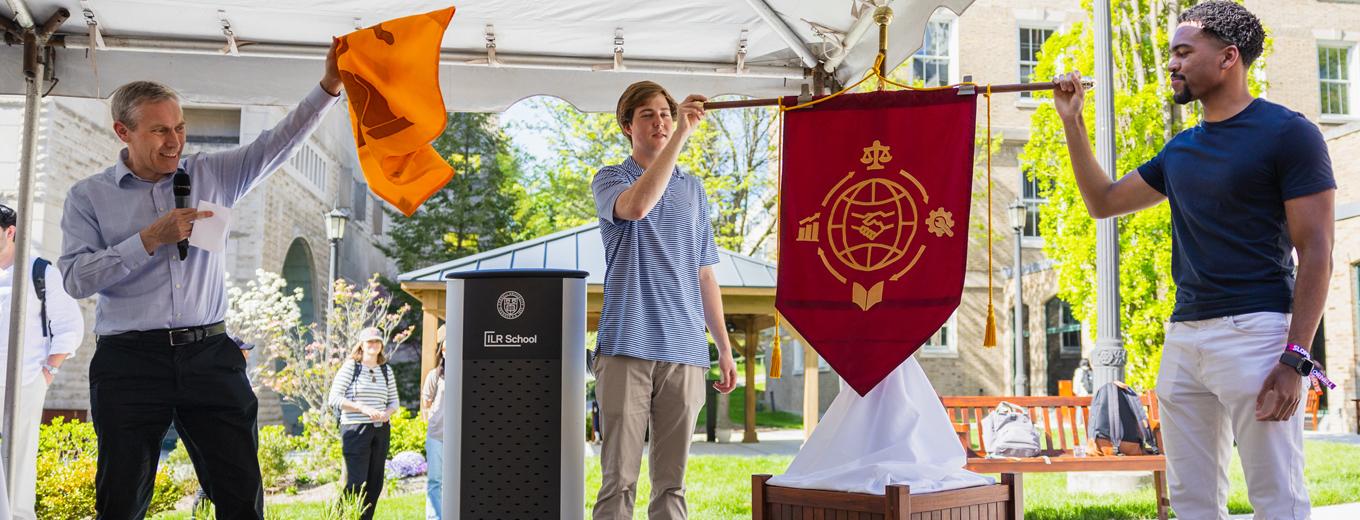
In 2024, ILR unveiled a new ceremonial banner to reflect the school's contemporary breadth, which includes labor and labor relations, human resources, business, law, government and social justice, while staying true to the school's founding principles.
Read More
The Labor Action Tracker, a database of strike and labor protest activity across the United States, began at ILR in 2021 and became a collaborative effort between ILR and the University of Illinois School of Labor and Employment Relations in 2024.
The Center for Applied Research on Work is founded, underscoring ILR’s commitment to New York state, along with the Climate Jobs Institute, which seeks to help build union climate-related jobs in New York state and the U.S.
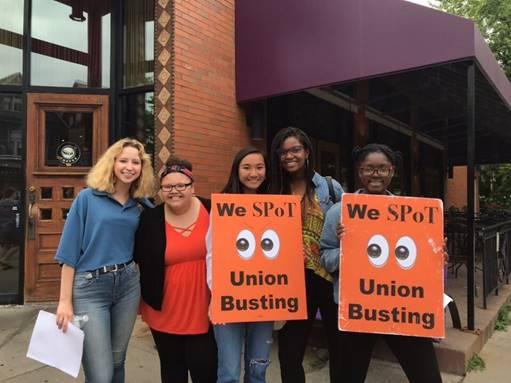
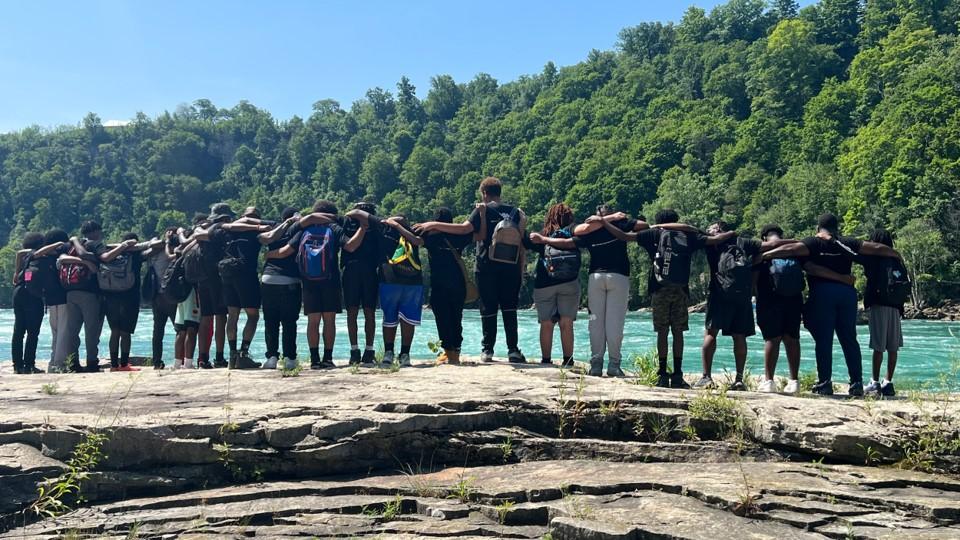
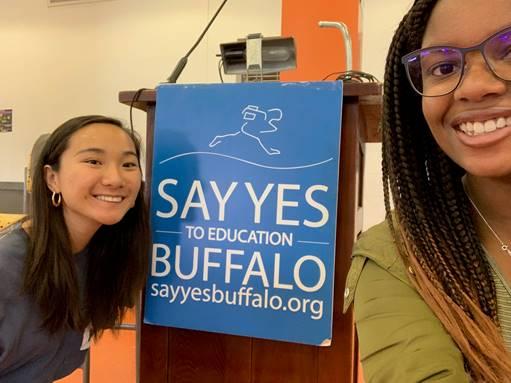
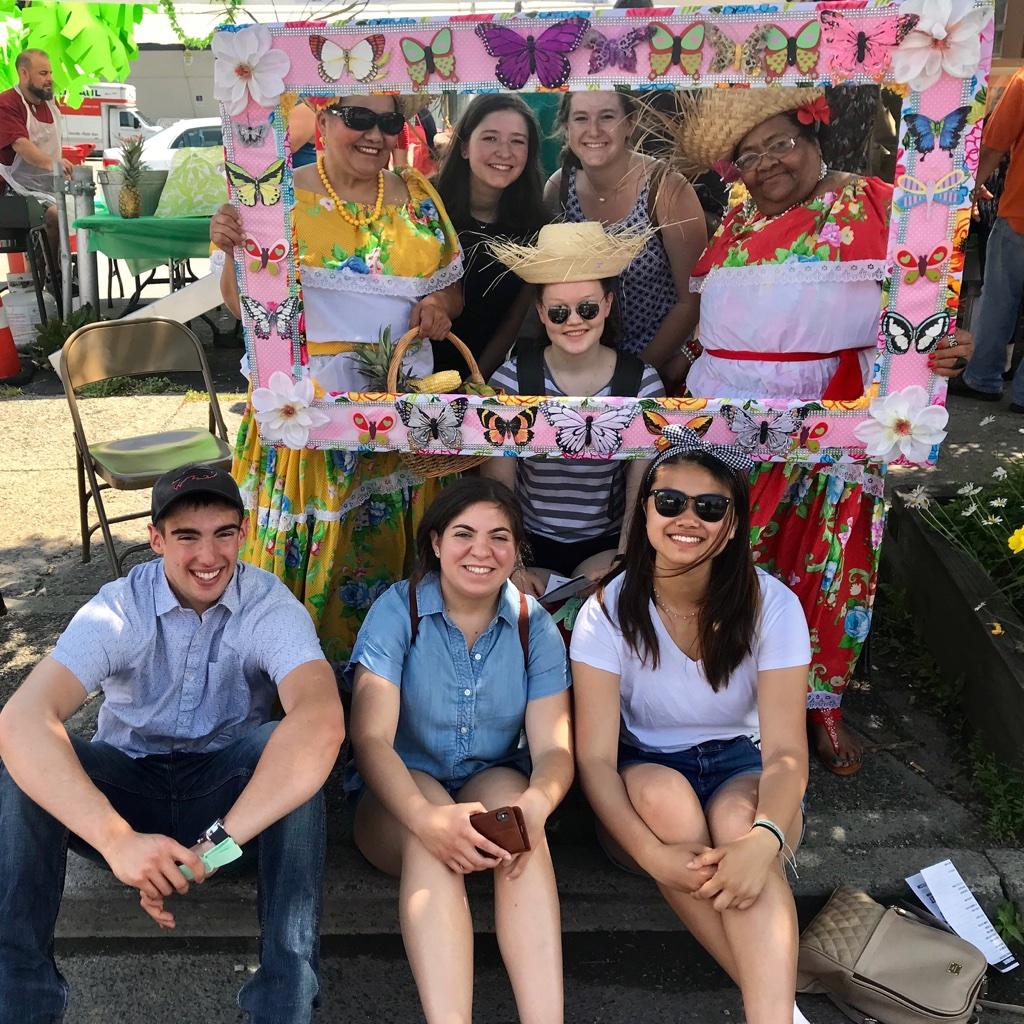
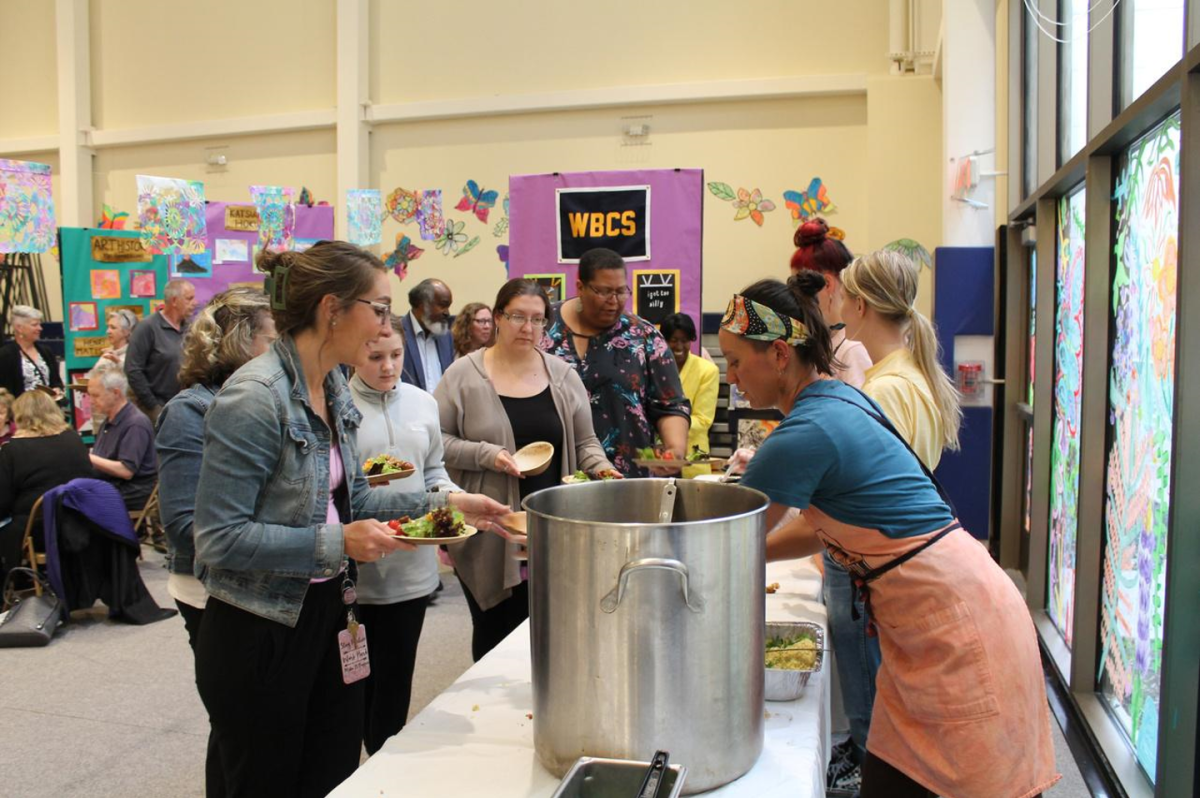
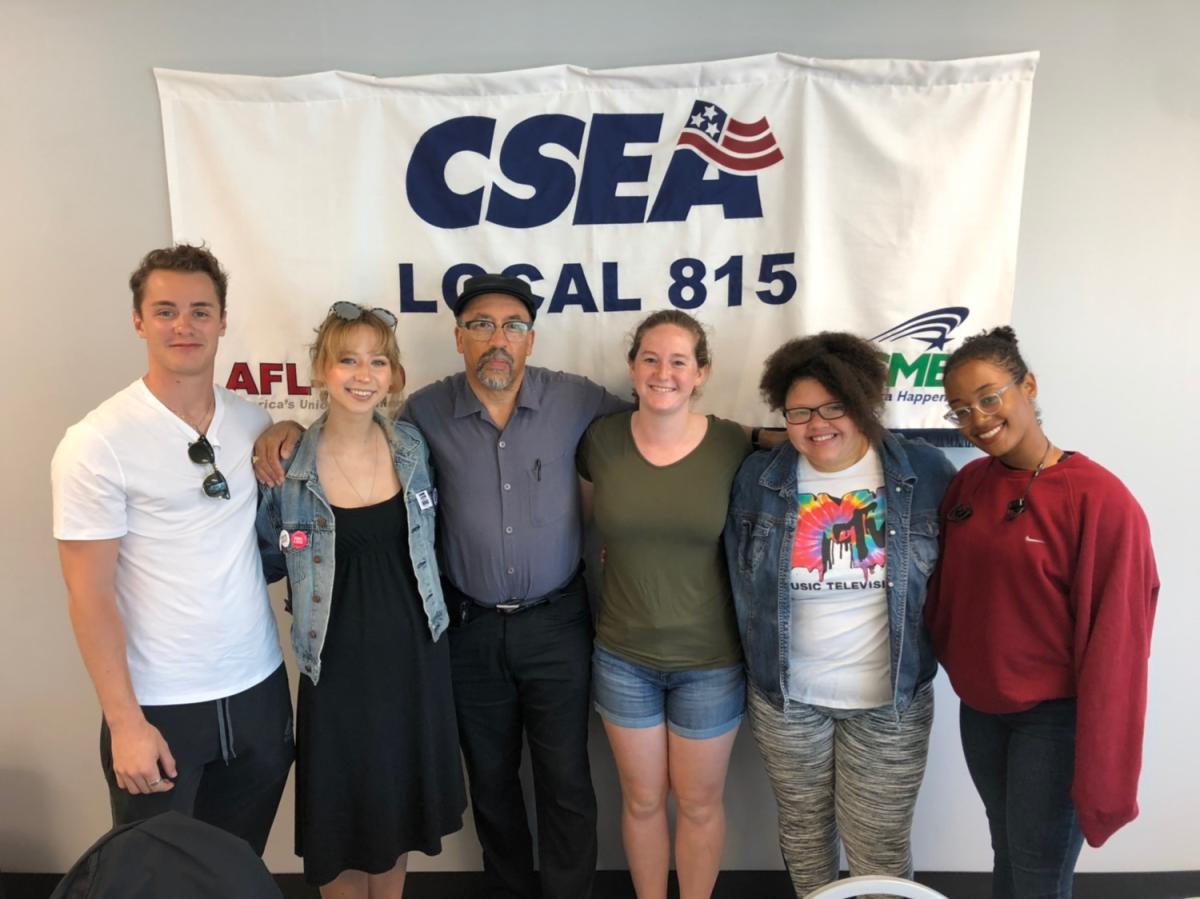
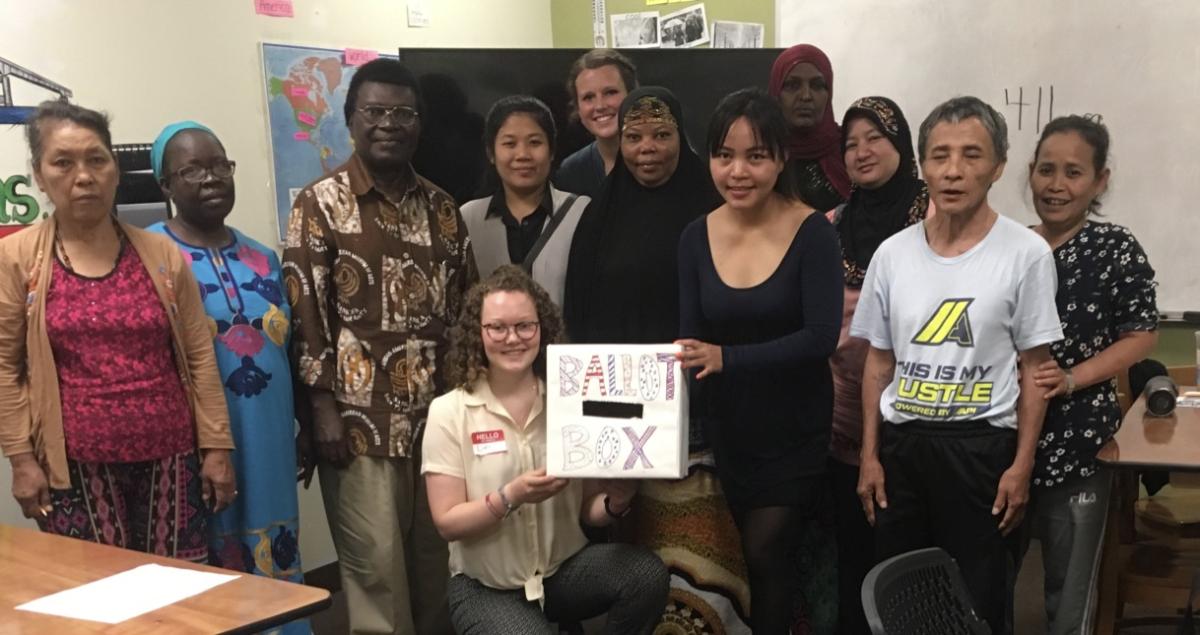
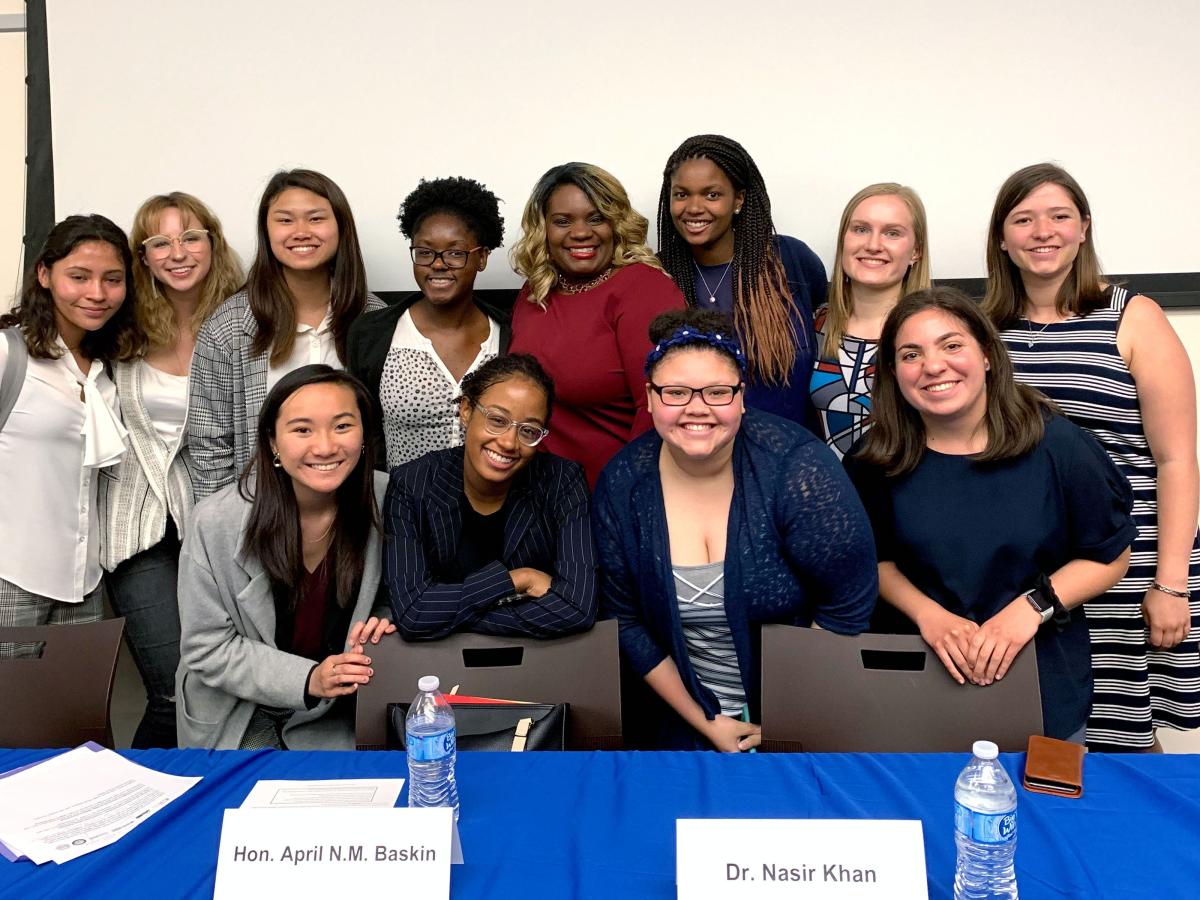
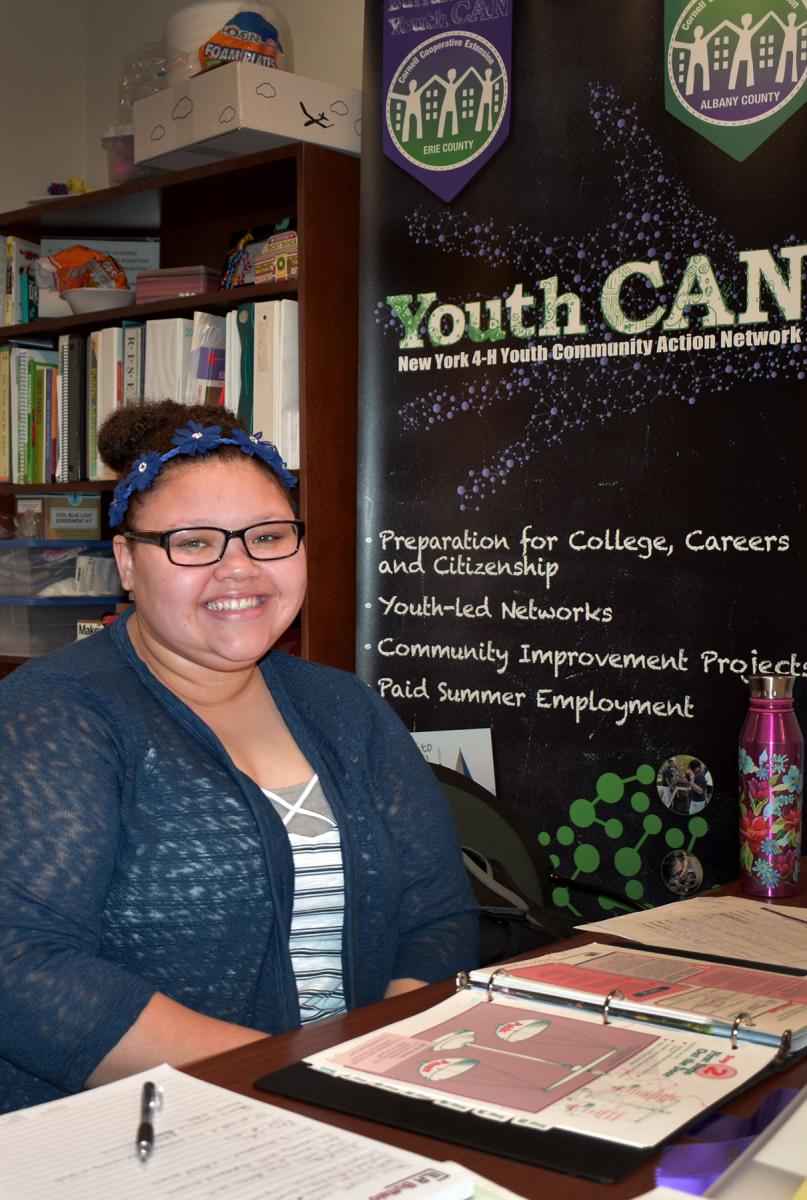
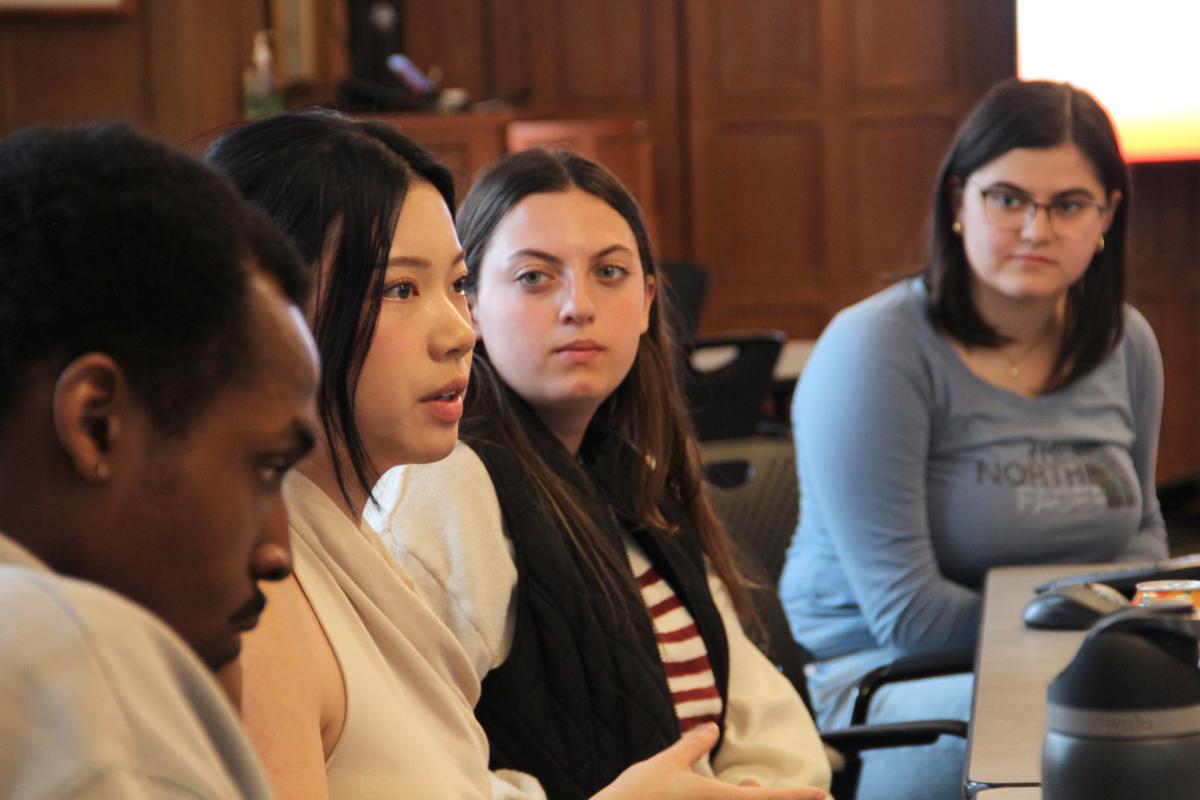
The High Road program, founded in Buffalo, expands to New York City and Ithaca, providing students with dozens of paid, engaged learning internships with community organizations.
The Global Labor Institute opens, providing research and expertise for workers and organizations across the world. The initiatives are among 16 ILR centers and institutes.
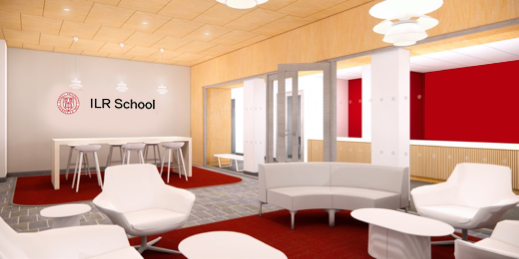
In fall 2025, the school begins renovations of King-Shaw Hall. When the building reopens in 2027, it will be home to the ILR Student Commons, which will include the Offices of Student Services and ILR Registrar and the brand new ILR Café. This, along with the January 2026 move of the Office of Engaged and Experiential Programs and the Undergraduate Admissions Office to the 3rd floor of Dolgen Hall, will complete the evolution, turning King Shaw Hall, Dolgen Hall and the Golden Courtyard into a lively space for students.
